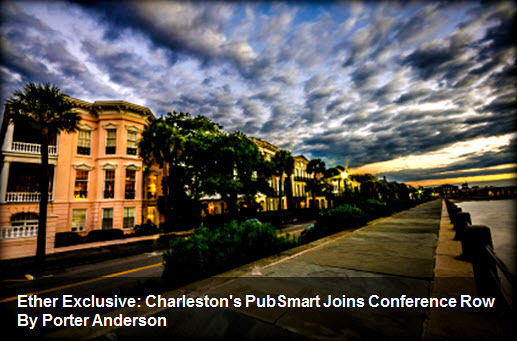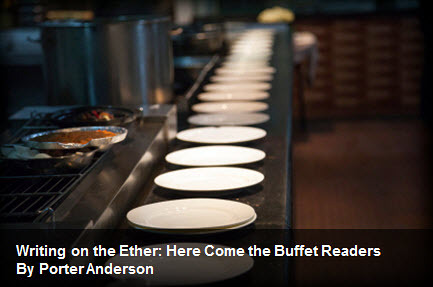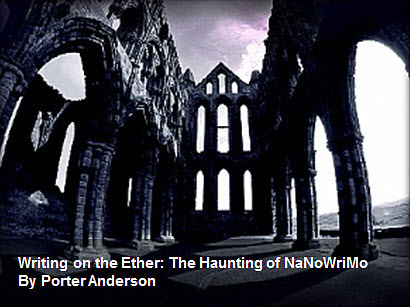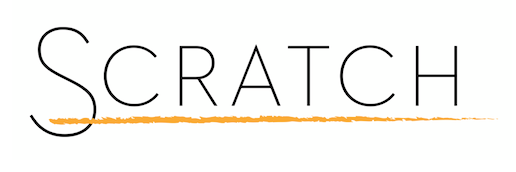Jane Friedman's Blog: Jane Friedman, page 169
November 15, 2013
The Difference Between Marketing and Publicity

photo by Stuck in Customs / Flickr
Today’s guest post is excerpted from What to Do Before Your Book Launch by M.J. Rose (@MJRose) and Randy Susan Meyers (@randysusanmeyer). It is an excellent complement to my own piece on this topic, Book Marketing 101.
No one can buy a book they’ve never heard of.
So, how do readers hear about books? Everyone likes to say it’s word of mouth, but it’s not possible to tell a friend about a book until you’ve heard of it yourself.
That’s where publicity and marketing come in. What’s the difference between the two? Marketing is paid placement on blogs, radio, TV, newspapers, etc. These show up as ads, advertorials, promotions, blog tours, and more. With marketing, if you pay for it, it shows up. You hire a marketing company and they buy the space. The attention is guaranteed to be there.
Publicity is the opposite. You pay a publicist to pitch your book to newspapers, magazines, blogs, TV, radio interviews, and reviews. You are paying for the publicist’s effort to get you some attention. A publicist’s rate of success is determined by the quality and quantity of her connections.
Should You Hire a Publicist?
You should decide whether or not to hire a publicist early on, especially as the most high-powered ones will want to work with you five or six months before your book comes out. There are different levels of publicists: those who will oversee an entire campaign in concert with your in-house publicist, and those who concentrate on specialized areas, such as radio or blog tours.
Budgetary constraints might be your main concern, but be certain to consider the importance of the marketing side of the business. You have one book getting published and one chance to see it fly—perhaps two if it’s coming out first in hardcover and then in paperback.
Many authors decide against hiring a publicist because they’re certain “they love me at XYZ Pub House,” only to be devastated when they see how thin the love can be in the end. Publicists at most publishing houses are stretched to the limit. The in-house publicist for Randy’s first book did a great job, but having an outside publicist from Goldberg McDuffie allowed for more in-depth work from both publicists. The two publicists worked together so well that they shared a panel with Randy at Grub Street’s Muse & The Marketplace conference.
What About Marketing?
Publicity won’t work without marketing. Just as you can (and sometimes must) pay for an outside publicist, you can (and sometimes must) pay for outside marketing. For most authors, the publisher’s marketing budget is limited, so it is important to find out what they are doing and what they aren’t doing. Then you can decide how to allocate your money. You might consider anything from marketing professionals to online book tours. You might prepare marketing materials ranging from bookmarks to postcards. [Note from Jane: Be sure to check out MJ Rose's marketing service, AuthorBuzz.]
Marketing will provide synergy for your reviews, awards, and good news to make sure that people know your book exists.
While many writers use the words publicity and marketing interchangeably, they’re not the same thing and this confusion often causes people to make marketing mistakes. As we said above, marketing is something you pay for. Publicity is something you hope for. They both work to promote a book. People need to hear about a book many times and in several ways before they really notice it.
Marketing is the concrete process of spreading the word about your book by spending money. You can hire a web designer, buy advertising space, and hire a street team. These are all tasks with a specific, measurable outcome. My own marketing business distributes information about books and authors via the web to readers, book club members, librarians and booksellers.
Publicity, by contrast, sounds much sexier. You might get a mention in O Magazine or USA Today, or get an interview on NPR. Or you might not. Publicists and authors work to generate publicity, but it’s never a sure thing. Sometimes these efforts are enormously successful, paying off in high-profile reviews in the New York Times and People Magazine, but no publicist can guarantee such a reward. So when you put all your efforts into publicity and none into marketing, you’re taking a gamble.
7 Marketing & Publicity Points from M.J.
85% of all books get less than $2,000 in marketing from the publisher. And more than 85% of all books sell less than 1,000 copies.
95% of all bestsellers get more than $50,000 in marketing and PR, and often it’s upwards of $150,000. There are never more than two or three books a year that break out on a fluke with no marketing and PR. When people say, “If advertising and PR worked every book would be a bestseller,” they are approaching it from the wrong direction. The real question is, “How many books have succeeded without any PR or marketing?” and the answer is: very few. Advertising and PR can’t make every book a bestseller because not every book is good enough or appealing enough. It is much easier to write an exciting ad than to write a whole book. Not even the most brilliant PR and marketing can sell a book people don’t want to read.
Marketing and PR are both valuable, so I advise that if you have a big enough budget you should hire a publicist. For every dollar you spend with a publicist, spend a dollar with a marketing company. That way, even if the publicist can’t get reviews and publicity, you’ll still get exposure.
Exposure does work. If you take 100 books and look at the ones that had PR and marketing dollars spent on them and the ones that had none, you will absolutely see that the books that had PR/marketing outsold the others more than ten to one. The problem comes when you look at one book at a time. For instance, I’ve done AuthorBuzz and blog ads campaigns where I have proof that over 10,000 people clicked through and looked deeper at the book, but ultimately the sales were less than stellar. What happened? We got attention for the book, but when potential readers looked more closely, they didn’t buy. I’ve also done campaigns where we did minimal marketing efforts and the book went back to press, which the publisher never expected, or the book ranked higher on a bestseller list than they expected or it simply sold through at a better rate than other books in the season/genre. What happened? It was a terrific book. It resonated with readers. PR and marketing can’t sell books. It’s worth repeating. PR and marketing can’t sell books. PR and marketing can expose books to potential readers. The book—the words and the premise, the first few pages, the flap copy, the book cover—must entice, enchant, seduce. The book sells the book. In advertising there is a saying: nothing kills a bad product better than great advertising. It’s true for books too.
What to spend? The advice I give everyone, and follow myself, is to keep your day job or a freelance job and spend as much as you can on selling your book. I’ve worked with authors who spend $985 and others who, between my services and other efforts, spend $50,000. One way to decide: if you are going to look back and regret spending the money, don’t do it. But if you are going to look back and say, “If only I had tried maybe the book would have succeeded,” then do it. Nora Roberts said you should spend 10% of your advance. For years, James Patterson spent all of his on advertising and kept his job.
If you are going to hire a publicist or marketing firm, don’t believe anyone who promises you specific sales numbers. No one knows how many copies of your book they can move and if they start out by lying, you’re going to get screwed. Make sure you look at their testimonials and recognize some of the authors/publishers.
Lastly, if it sounds too good to be true, it’s probably not true. People will try to get you to pay money to attend teleseminars on how to become an Amazon No. 1 bestseller for ten minutes. All that achievement actually requires is that you manipulate the system and get 100 friends to buy the book within an hour. Don’t pay anyone anything for advice like that.
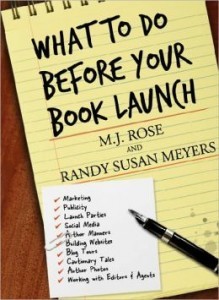 If this advice was helpful to you, I highly recommend getting a copy of the book What to Do Before Your Book Launch by M.J. Rose and Randy Susan Meyers.
If this advice was helpful to you, I highly recommend getting a copy of the book What to Do Before Your Book Launch by M.J. Rose and Randy Susan Meyers.
The post The Difference Between Marketing and Publicity appeared first on Jane Friedman and was written by M.J. Rose & Randy Susan Meyers.
November 14, 2013
Ether Exclusive: Charleston’s PubSmart Joins Conference Row
Table of Contents
More Than Southern Hospitality
What It Will Cost You
Who’s Involved
What’s Planned
Why Small Publishers
Springtime for Conferences
More Than Southern Hospitality
CHARLESTON, South Carolina, November 15, 2013– PubSmart 2014: Emerging Authors, Emerging Avenues, being staged at the Francis Marion Hotel in Charleston, South Carolina, April 16-18, 2014, will feature a keynote breakfast with publisher Jane Friedman and keynote luncheon with author Hugh Howey.
To a Charlestonian like me, Francis Marion is better known by his nom de guerre, the “Swamp Fox.” Marion would get that sly nickname in the Revolutionary War for leading his men in early forms of guerrilla warfare against the British.
I’ve always thought that given a few more weeks, our Lowcountry mosquitoes could have handled the Redcoats without help. But the Swamp Fox is credited with assisting the bugs in terrorizing the forces of the Crown.

The Francis Marion Hotel, an icon in Charleston at the corner of Calhoun and King, reaches its 90th year of operation in 2014.
Those who don’t know Carolinian history can easily assume that the Roaring Twenties-born Francis Marion Hotel is named for a figure in the War of Northern Aggression. After all, Charleston is the seat of the Confederacy.
Likewise, it can seem hard to find a hotel these days that doesn’t have a publishing or writers’ conference installed in its ballroom. If you factor in regional events and include trade shows, seminars, retreats, and workshops, our conferences can all start to look alike. Pretty soon, it’s a whole world of box lunches.
But not quite:
PubSmart is about the business of publishing in a quickly changing book marketplace. It’s about helping emerging authors and small publishers make the smartest decisions based on the latest opportunities and information.
See the phrase I’ve underlined? “Emerging authors and small publishers.”
On the whole, our conferences are either industry-facing or writer-facing. Sure, sure, sure, you can call entrepreneurial authors “small publishers” if you want to. But if, in fact, we take this phrasing at its word, this new addition to the archipelago of conferences stretching from one end of a year to the other has an important and welcome distinctiong to offer.
When having an argument, and you are know are you right, just let the other person ramble themselves into losing it. Stay silent.
— Ginger Clark (@Ginger_Clark) November 13, 2013
PubSmart may be creating something we’ve needed to see much more of: a conference in which not only business-conscious authors but also smaller publishing companies can start doing the logical networking they’ve needed: with each other.
The assembled faculty has been chosen not only for their expertise in their respective fields – agents, editors, publishers, publicists, attorneys, association presidents and author services CEOs – but for their generosity of spirit as well.
I arranged with Kathy Meis and her associates producing PubSmart 2014 (hashtag #PubSmart, Twitter handle @PubSmartCon) to announce the debut of this new confab exclusively on the Ether not only because it’s set in the Holy City but also because I believe its organization brings into relief some of the things we need to see happening in more conferences.
Just to be clear: disliking a book doesn't make you a "hater," and having standards doesn't make you a "snob."
— Michael Schaub (@michaelschaub) November 13, 2013
What It Will Cost You
Let me give you the technical details on PubSmart first, quickly.
Tickets for the event go on sale tomorrow, Friday, November 15.
There’s a $50 early-bird advantage in buying before February 1.
You’re also welcome to use my discount code PS14PA30 to save $30. It’s easy to remember: PS (PubSmart), 14 (2014), PA (Porter Anderson), and 30 (my age).
A “VIP Package” including master classes, the conference, videos of regular sessions, preferred seating with faculty members at brunch: $445 now, $495 after February 1.
A basic pacakage including the conference events and videos of regular sessions: $345 now, $395 after February 1.
Add-on master classes are $50 for one, $90 for two now; $65 for one, $110 for two after February 1.
The faculty brunch as an add-on (you sit with the instructor of your choice) is $50. Guest passes are available, as well.
Facebook makes $230 in revenue per second.
Google: $1873.
Amazon: $1996.
Apple: $4540.
Samsung: $6486.
(Source: http://t.co/U6k6XqtyFt)
— Nick Bilton (@nickbilton) November 13, 2013
Who’s Involved

The producing team of PubSmart is, from upper left, Kathy Meis, Shari Stauch, Brenda McClain, Jacqueline Gum, and Kendra Haskins.
The guiding quintet here comprises Meis, of Bublish; Shari Stauch, Kendra Haskins, and JacquelineGum of Where Writers Win; and Brenda McClain of McClain Communications.
And there’s an impressive rollout of inaugural sponsors for a startup conference: the College of Charleston; Amazon’s CreateSpace and Kindle Direct Publishing (KDP); Kobo Writing Life; along with Bublish and Where Writers Win.
Session sponsors include the Independent Book Publishers Association (IBPA) and Pubslush.
Exhibitors signed on at this point are the Alliance of Independent Authors (ALLi); BiblioCrunch; BookLogix; Boutique of Quality Books; IngramSpark; NetGalley; and Scratch Magazine.
Needless to say, it’s an azalea-lover’s dream to have a reason to hie oneself to mid-April Charleston, where the Ashley and the Cooper Rivers meet to form the great Atlantic Ocean. I’ll be shoving everyone into horse-drawn carriages from Anson Street to tour the antebellum historic district south of Broad Street.
But once you’re back from Battery Park and the the sweet grass weavers on Meeting Street, I think you’ll find an interesting assortment of movers and shakers at the Swamp Fox’s namesake hotel.
If this new conference is any indication, the strategy in these things is shifting—subtly, not outlandishly, and in the right direction.

Jane Friedman
Start with the two keynoters mentioned in the opening. We can hardly do better.
There’s Ether host Jane Friedman, the opening keynote speaker.
Friedman is currently doing great things at VQR as its digital czarina. She’s formerly the publisher of Writer’s Digest, and has recently launched Scratch Magazine because she has so much extra time on her hands,
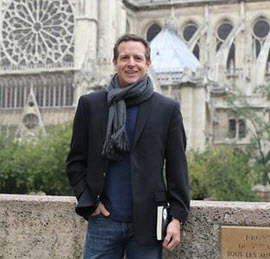
Notre Dame sneaks into a shot with Hugh Howey.
And there’s the shockingly productive Hugh Howey, who’ll give the luncheon keynote.
This is a homecoming for Howey, as it is for me. He worked in a bookstore there, went to the College of Charleston, and his mother and sister live there.
Howey has a NaNoWriMo effort under way called SAND, even as he continues tearing across the Continent on his WOOL World Tour, throwing off great photos and thoughtful POV posts on the industry every time he catches a wi-fi connection.
Yes. We’re in the age of multiple keynotes. That one got away from us before we caught it.
One of my favorite industry-facing confabs, the very pink FutureBook in London a week from today, November 21 has a trio of keynote speakers, all excellent: Brad Stone, author of The Everything Store; Seni Glaister of The Book People; and Charlie Redmayne, now of HarperCollins UK, formerly architect of Pottermore. I’ll be doing full live coverage, hashed #fbook13, join us.
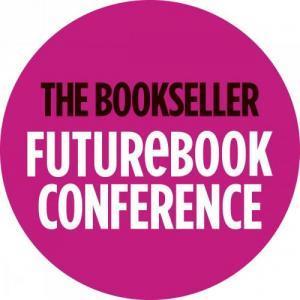 (Londoners, you have through Friday to book seats)
(Londoners, you have through Friday to book seats)
But look further at the PubSmart roster of speakers. Will Murphy and Tracy Bernstein from Penguin Random House; Chuck Adams of Algonquin Books; Robin Cutler of IngramSpark; David Symonds of CreateSpace; Christine Munroe of Kobo Writing Life; Tarah Theoret of NetGalley; Orna Ross of the UK-based Alliance of Independent Authors (ALLi); Miral Sattar of BibiloCrunch; Amanda Barbara of Pubslush; agents Jeff Kleinman of Folio and Brandi Bowles of Foundry; Angela Bole of IBPA, Hope Clark of Funds for Writers, and attorney Anne Dalton.
There are more and the list is growing. But consider that this is an unusually articulate mix of regional, national, and international speakers and presenters. We don’t see some of these faces on every conference bus (not that we don’t love the gang, mind you).
There’s a range and reach on this developing lineup that helps explain some of the direction the programming is taking.
Can we agree to pre-empt the widespread use of the pseudo-word "kludgy" and it various forms? For the children.
— Don Linn (@DonLinn) November 13, 2013
What’s Planned
True, we’re still seeing this problem of unnecessary word invention in some of these settings. I’ve spotted “authorpreneurship” on Charleston’s menu of sessions. (And “co-opetition” came up again recently in a post by a colleague who really needs no such cute formations to say something much more interesting, such as “collaborative” or “cooperative competition.”)
We’ll forgive them, Ethernauts, because even “she-crab” soup is as cute a name as it is a gratifying concoction.
More important, look at some of these session topics planned for PubSmart:
Acquisition Editors: What’s the Next Big Read? (Ask them if you should write to trends, let’s see what they say.)
Entrepreneurial Authors (you can guess which non-word I just dodged): From Cost-Planning to Funding to Reinvestment. (Have you seen the idea of reinvestment tagged on conference sessions for writers? In fact, have you seen the question of planning out costs come front and center?)
Distribution Basics: The Churning Channels of Print and Digital Delivery. (If there’s one area in which authors seem to follow rather than lead, distribution is it. And that’s odd because “digital” is entirely a creature of distribution. That’s how it works on us. That’s what it is. Nice to see it surface here. There’s a master class on the topic, too.)
Literary Agents: From Gatekeepers to Creative Marketers to Publishers. (We can’t revisit this topic enough these days. And in many such sessions, I end up wishing there were as many agents as authors in the seats.)
Foundations of a Bestseller: Creating a Platform for Stellar Sales. (If this one is truly pitched toward planned bestseller-dom, then we have a fascinating hour in store. That’s a definable goal and mindset. Vetting it would be helpful.)
How to Approach Booksellers and Librarians. (The techniques here are hardly as intuitive as we might wish, and with both bookshops and libraries under major pressures, many authors aren’t being welcomed with open arms, as they expect to be.)
There are more important angles, from personal branding to the cultivation of influencers and the challenge of finding the right editor (another surprisingly tough task for many authors and small publishers at a time when a lot of good editors are available.)
Artist friend was commissioned to illustrate a kids' book. Contract didn't specify number of pictures. After signing, he discovered (1 of 3)
— Dave Morris (@MirabilisDave) November 14, 2013
…that workload v pay came out below the minimum wage. He mentioned this on Facebook in a comment on the lot of artists & writers. (2 of 3)
— Dave Morris (@MirabilisDave) November 14, 2013
…He didn't name the publisher, but the next day his agent phoned. Publisher had seen the FB comment & cancelled his contract. (3 of 3)
— Dave Morris (@MirabilisDave) November 14, 2013
Why Small Publishers
What becomes clear is that if small publishing companies want to get into this round of sessions, they’re going to (a) hear some of the more pointed communications aimed at writers, and (b) they’re going to be able to assess their own places in a marketplace teeming with wannabes who are frequently without this kind of information.
Imagine trying to evaluate how professionally aware an unknown writer is these days, when everyone including the members of your immediate family are presenting themselves as “authors.” This is what small publishers have to do every day in selecting their risks. It’s a swamp out there.
Networking with authors who care enough to come out of the jungle and expose themselves to this kind of focus can only help. Learning here what those authors should know can only help more.
"These images tell the sad, unvarnished truth: There is nothing glorious about war." @postandcourier by Brian Hicks. http://t.co/3SJz3m1vCf
— Gibbes Museum of Art (@GibbesArt) November 12, 2013
Springtime for Conferences
The digital dynamic has been good to the conference game.
The more publishing grapples with (or resists) change, the more players in every aspect of the field can be drawn to conferences. Everybody wants answers. Everybody wants perspective. Everybody wants an early warning,
An increasing part of my own work these days involves both conference programming and coverage. And this gives me a chance to see a great many of these events in operation. I’m also fed a steady stream of information by helpful sources and colleagues about conferences I may not be seeing first-hand. Quite a number of folks shoot me notes with their opinions on the strengths and weaknesses of gatherings they’re attending.
I’m glad to say that I’ll be on the PubSmart program, myself, team-teaching a master class on media and messaging; a panel on discoverability; and on the faculty brunch lineup, along with live coverage of everything that moves, of course.

Live oaks on the Charleston Battery. Image: iStockphoto – idowse
Conferences, even in more stable times (remember those?), are especially good for aligning industry messages; testing where shifting ideas have reshaped one or another element of the landscape.
It’s at conferences that the industry! the industry! talks to itself. Sometimes it mutters to itself. Frequently it does some braying. Getting into this noise means you’re voicing part of the conversation.
Kindly spare us your Rebel Yell impression, a fabled scare tactic that may well have meant yelling “authorpreneurship!” and “co-opetition!” at the enemy. I’d run away, wouldn’t you?
But consider that the field today is characterized by great, ranging armies of newcomers trampling everything in sight with the “democracy” of self-publishing. We all support their right to write, their prerogative to publish. And yet the better talent needs tactics to get around the yucca and hack through the kudzu.
The most successful operatives in the slush swamp will be the foxes.
Puisqu'on parle bcp de tryptique de #Bacon aujd'hui, saurez-vous trouver celui caché dans ce Vine ?https://t.co/bqZJl1ET0J #MasculinMasculin
— Musée d'Orsay (@MuseeOrsay) November 13, 2013
Main image: iStockphoto – BCunninghamSC
The post Ether Exclusive: Charleston’s PubSmart Joins Conference Row appeared first on Jane Friedman and was written by Porter Anderson.
November 12, 2013
Book Marketing 101

Photo by radioher / Flickr
Note from Jane: The following post is an article I wrote for Scratch, a new magazine I founded that focuses on writing and money. It is intended as a primer for authors about to embark on a book marketing campaign, whether they’re self-publishing or traditionally publishing.
If this is helpful, consider a subscription to Scratch, where we’ll be covering more topics like this, with an in-depth angle, based on interviews and research.
It is possible, if not desirable, for an author to launch an effective book-marketing campaign without a publisher’s support or assistance. Mainly, it requires time and energy. It may also require some monetary investment to hire a publicist, PR firm, or marketing consultant to advise and assist you. The good news is that, by the time your second, third, or fourth book comes out, you should have a solid base of readers to work from—a base that was developed from marketing activities associated with previous launches.
Remember that a comprehensive book-marketing campaign uses a combination of tactics to reach readers. It would be unusual to focus solely on social media, or solely on events, to generate word of mouth. The best approach combines online and offline components, and if done right, each amplifies and strengthens the other.
Author Events
Most authors know that the multi-city book tour is a thing of the past, but of course you can still find New York Times bestselling authors doing tours for their new releases. Chicago-based publicist Dana Kaye says such tours happen mostly as a favor to the bookstores, as a way for the author to give back to the community. But bookstores aren’t always the best place for events.
Kaye says, “Any time you’re trying to get people out of their house and go somewhere, it’s very difficult. … You’re competing with many different things. However, more people are inclined to go somewhere if it feels like a party or an event, rather than just going to a bookstore and listening to an author read their work or talk about their work.”
Many authors and publicists—and even the bookstores themselves—have caught on to this and now plan events in alternative venues, such as bars or clubs. Bookstores and other literary organizations sell tickets to author lunches held at restaurants, and the ticket price includes a copy of the book. Such events feel more social, and they avoid the lower perceived value and less compelling nature of the reading-signing format.
Kaye looks for ways to partner authors for events and tours, since that generally leads to better turnout and a better pitch for media coverage. For example, Kaye’s firm organized and promoted the Young Authors Give Back Tour, in which four YA authors, who had all published before 25, toured the country and taught writing workshops for teens. That angle got two TV appearances and a feature in the Chicago Sun-Times.
Even if the days of the traditional author tour are over, events still play an important role in an author’s career. Kaye says:
Touring or doing an event is more about making a footprint. When you go to a city, it’s not just the books you sell, but the people you talk to at the event. … It’s about making connections with people. That being said, media is the primary reason you tour, even if that’s becoming more difficult to pitch.
Working with Indie Bookstores
First-time novelist Marjan Kamali (Together Tea, Ecco, 2013) says her readings and bookstore events—some of which she planned herself—have energized her in a surprising way. “The reason they’re so great is because I’ve been doing them at small, independent bookshops, which is who will have me. … It warms my heart to think there are these people out there who still love books, who know so much, who support authors.”
Other authors feel the same way, and go out of their way to support their independent bookstore as part of their book launch or overall marketing campaign. Pete Mulvihill, owner of Green Apple Books in San Francisco, says that some authors adopt an indie bookstore to be their fulfillment center for anyone who wants to find an inscribed copy. He says,
“We love when authors come by and sign books, whether there’s an appearance or not, because it gives something we can offer that our major online competitor cannot. We’ll most likely put it on our Facebook page or tweet about it. It generates a little more buzz. It tells people you’re in town, you’re a human, and that you care about indie bookstores. Even bookplates. You can send those to bookstores.”
For her most recent book launch, Michigan author Loreen Niewenhuis made her travelogue, A 1000-Mile Great Lakes Walk (Crickhollow Books, 2013), available only from twelve Michigan independent bookstores for its first two months on the market. In an interview with Shelf Awareness, Niewenhuis said, “Authors … need to think about how they’re getting their books to people. They need to think about how to make connections, not just about ‘I need to sell my book.’ How you sell your book is just as important.”
Whatever the benefits, doing events—regardless of what venue you choose—can be costly and time-consuming for an author, especially if turnout is low. A start-up, Togather, is attempting to address the uncertainty and mitigate the risk by allowing publishers and authors to crowdsource events. If enough people in a community support an author event, then the author commits to going. Togather also hosts online chats if the author can’t commit to travel, especially to a small town or market.
Online Events
For her next book release, thriller novelist Jamie Freveletti, a client of Kaye’s, is planning a live-streaming launch party using LiveLab Network. Freveletti says, “I did one streaming event with The Poisoned Pen bookstore, and I was surprised how many people logged in and watched it. People can be part of the excitement of it. It’s just a fun thing to do.”
Another online event service, Shindig, founded in 2009, allows authors to give readings in front of a live online audience; at BookExpo America this year, Shindig hosted live chats with dozens of authors on the show floor to illustrate the potential of their service.
But do online events sell books?
Kaye says, “We had a virtual launch [for a client] with several hundred people, but I didn’t see the transition into sales. That’s what I’d warn authors. If you’re going to do an online discussion … do something that’s going to encourage book sales. It’s a great way to interact with lots of people all over the world, but you want them to buy the book.” Kaye recommends having an active buy link during the digital launch event, or providing a discount code to attendees to drive purchases.
It’s always difficult to decide, however, which events might be worthwhile, since they are as much about creating word of mouth as selling books. A happy accident can always happen even if the sales aren’t there. “My old boss Stuart [Applebaum] used to say we don’t know if getting the word out about the book will sell the book, but we know they won’t buy it if they’ve never heard of it,” publicist Leslie Rossman says. “We’re always looking for the critical mass of exposure for a book.”
Traditional Media
Publishing insiders know that the number of media outlets available to pitch—on any type of coverage—has dramatically shrunk. Rossman, whose firm specializes in high-end radio such as NPR, says, “It’s very competitive. It makes people very selective. There’s fewer spots and that includes radio, TV, and print—and there’s more syndication across the board.”
However, when you do get a hit in the media, it tends to stick with people and make an impact. “If you’re driving in your car, and you hear Terry Gross, that interview is going to resonate with you much more than if you’re reading the interview online,” says Kaye.
With persistence, authors can secure traditional media coverage without the publisher making the call. Katrin Schumann, the author of The Secret Power of Middle Children (Hudson Street, 2011), has been featured multiple times on the Today show, as well as on NPR and other media. When she started marketing her first book in 2008 with co-author Susan Callahan, she was totally unschooled in pitching, and didn’t even consider TV a possibility. But Callahan had worked in marketing and understood the psychology behind it.
“She had this persistence,” Schumann says, “continually knocking on your door in a slightly different way for the same thing. I realized that my instinctive approach was informed by the way I was brought up, which was polite. If they say no, they say no.”
Over a year after their book launched, after repeated pitching, Schumann and Callahan got on the Today show. Schumann says of Callahan, “She didn’t get overwhelmed and dispirited when encountering resistance. That’s a key component authors don’t take into account—the emotional rollercoaster of putting yourself out there continually and getting turned down, and not taking it personally.”
Kaye’s advice for authors who want to try pitching themselves is to focus on the quality of their pitch. Take the time to research media outlets, research what they’re covering, and write a good pitch e-mail that shows how you fit into their editorial mission. Pitching doesn’t require a special skill set or the contacts of a publicist.
However, Kaye says, it helps if you pick up the phone. “You have to not be afraid to call and get the right contact information, to do the digging.” Kaye says authors can also ask their publisher for help; just tell them you’d like to reach out to a specific media outlet and are looking for the right person to contact with your pitch.
An effective and quality pitch process, however, can be time consuming, and this is where authors should evaluate where their time and effort is best spent, and if they can benefit from hiring a freelance publicist to assist them. Kaye says, “People ask, ‘Can I do it on my own?’ The answer is yes, if you have an extra eight hours in the day. Our job is to stay on top of what’s current and stay on top of news stories. Most authors don’t have time for that.”
Online Marketing
It’s the surest way to start a debate in a room full of writers: ask them about the value of social media and other forms of online marketing. On one side of the debate, you have those who argue that reader engagement through social media contributes to long-term career success and visibility. On the other side, you have people who have participated in some form of online promotion, and who found it a waste of time or a major distraction without meaningful impact on sales.
Leslie Rossman says that, when it comes to online marketing, much depends on what your starting point is:
How much energy do you want to invest in pursuing secondary media? Some people are interested in that because they want to build. Some people will not get top media, so they’ll get something easy, and work up. If you’re a self-published author, you would probably benefit from doing everything possible.
One of the biggest challenges for authors is deciding what types of online marketing will work for them strategically, and figuring out how to be effective in cutting through the noise without consuming huge amounts of their time. Then there’s also the issue of actually enjoying themselves and the process.
Schumann, one of the leaders of Grub Street’s Launch Lab, says that authors are taught to focus their energy in ways that feel productive and meaningful to them:
[Authors] feel like they have this mandate to do specific things, but those things don’t feel authentic. They do them anyway—sometimes that’s a reality—but sometimes you have a choice to say no, I’m not going to focus on that, I’m going to focus elsewhere. You can make those choices, as long as you don’t make them by default. You’re still in charge. It’s better if you make really conscious choices about what feels comfortable for you.
When it comes to best practices in online marketing, the following themes emerged from my conversations with authors, publicists, and publishing industry experts.
Social Media (Facebook, Twitter, Etc.)
A gentle touch is encouraged. You’re not a salesman pushing your book on people. Rather than focusing on ways to get people to buy your book—to achieve a short-term goal—approach social media as a long-term investment in your career. While book sales are important, you have to think about the big picture of what’s sustainable. If a particular online activity saps your energy and becomes a drag, it’s probably time to reassess and refocus. However, don’t get discouraged if it takes time to understand or become comfortable with some online tools. Schumann says, “You don’t master these things in one day, which can be really discouraging for authors. It takes some patience and perseverance and to be open minded.”
If you’re struggling to figure out social media, Rossman recommends taking a look at books or authors you admire. What does their activity look like? What blogs or websites did they appear on? What do they do on social media? Can you emulate those things?
Blogs
Regular blogging isn’t necessary, but major blogs and websites can play an important role in spreading word of mouth, which means it can be worthwhile to write guest posts, do Q&As, or otherwise try to get featured by relevant bloggers who reach your target audience. It also helps to be an active participant or commenter on blogs where your readers hang out. Kaye says, however, to keep in mind that it’s a small number of websites that actually have influence and traffic. If you do any marketing on a small blog or website, make sure its audience is a good fit for you and your book so you don’t invest too much time for too little return.
Giveaways
Giveaways can work if done strategically. One of the most popular and effective venues for giveaways is Goodreads, a social media site for books and reading with more than 20 million members. One of the most important elements of the site—from a marketer’s perspective—is the Goodreads star rating, which is based on reader reviews. Goodreads has been one of Kaye’s favorite tools for getting the word out and generating pre-publication buzz. Kaye says, “As a society, we’re very influenced by reviews. If there’s not a lot of reviews [of your book], people probably won’t buy it. The Goodreads giveaways are good ways to generate those early reviews that make a difference.” For best practices in using Goodreads for giveaways and book launches, see the presentation Goodreads gave at BEA.
Since Goodreads will only do giveaways of physical copies, e-book authors—especially those who self-publish—have to look for other giveaway strategies. Amazon offers a special program for self-publishing authors called KDP Select. If you make your work exclusive to Amazon for 90 days, you can use 5 of those days for giveaways of your work. Independent authors typically use the giveaways to help generate reviews at Amazon, or to gain their book more visibility on Amazon overall. Some authors offer giveaways of a first book in a series when a new installment is about to launch, and enjoy a sales lift across the series after the giveaway concludes.
Another option is BookBub, a daily e-mail with more than 1 million subscribers that features limited discounts on e-books. For a fee—and if BookBub thinks your book is a good fit for its audience—BookBub will promote your e-book with a deep discount (usually setting prices of $2.99 or less) to a segment of its list.
E-mail Newsletters
Speaking of e-mail, newsletter lists that the author develops and owns can have a significant impact on sales and word of mouth. That’s because it’s easy for people to miss something that gets posted on social media, but just about everyone reads e-mail, even if it takes a long time. Kaye says, “The e-mail list is the best way to engage your network.” New authors may not have such a list ready for their first book release, but a recurring theme emerging from successful authors (both traditionally published and self-published) is that you should start building one through your own website, and at events, in preparation for future releases.
Parting Words of Wisdom
Kaye says she is constantly underestimating people’s networks; if you build a network you can reach (either online or offline), they will come.
“A debut author did two events, one in St. Louis where she grew up, and one in Denver where she lives now. Because she was a debut author, I was very nervous,” Kaye says. “She ended up having about 100 people come to each event, and sold even more books because people were buying multiple copies. That was very surprising to me. I really underestimated the people and the relationships really make the difference. If you make those connections, when it’s time for your event, they will come out.”
Freveletti experiments a great deal with all kinds of marketing to generate word of mouth, but, she says:
I can’t keep up with every nuance of what’s happening out there. But I can always call up a publicist and ask, ‘What do you think of this?’ They’ll say, ‘Oh, we tried that last year.’ … And they save me so much time. The most important thing I can do is write. We all have to find this balance between marketing and writing.
Reading and Resource List
How to Market a Book , by Joanna Penn, and Let’s Get Visible , by David Gaughran, are particularly helpful for independent authors as well as traditionally published authors who want to learn more about the best practices of digital marketing.
Smashwords Book Marketing Guide , by Mark Coker, is a free primer geared toward authors who are marketing and promoting e-books.
Goodreads 201 for Publishers, a presentation from BookExpo America 2013, is easily understood and applied by authors who are interested in the potential of that community.
By the Numbers, Peter McCarthy’s presentation on consumer marketing for trade book publishers (similar to his presentation at BEA 2013), offers insight into where digital marketing is headed.
The post Book Marketing 101 appeared first on Jane Friedman and was written by Jane Friedman.
November 11, 2013
My Advice on Hiring and Working With a Publicist
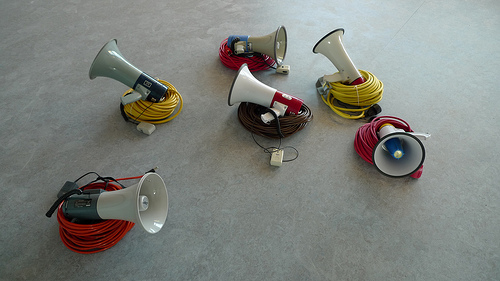
Photo by David Roessli / Flickr
In case you missed it, I was a guest over at Tweetspeak Poetry last week, where I wrote about how to find and hire a publicist.
Here’s a little of what I had to say:
A publicist is often seen primarily as a key to mainstream media coverage, but they also have tremendous value outside of that. They can cover marketing and promotion activities that you could do yourself, but they can often do it better, more efficiently or more knowledgeably. Their professional finesse may lead to a better impression and more sales in the long term, and leave you time to focus on other high-value activities. They can also help you avoid marketing tactics or campaigns that they know are problematic, or point you toward new, useful tools they’ve discovered. This is one of the key values pointed out by bestselling author Jamie Freveletti when I interviewed her for this piece on book marketing; her publicist provides her with savvy guidance—and a person to bounce ideas off of—in a confusing and ever-evolving digital marketing age.
To read the entire piece, as well as a great discussion in the comments—where I add more tips—visit Simple Tips on Finding and Working With a Book Publicist.
The post My Advice on Hiring and Working With a Publicist appeared first on Jane Friedman and was written by Jane Friedman.
November 7, 2013
Writing on the Ether: Here Come the Buffet Readers — Subscription Book Services
Table of Contents
Sorry, Can You Pass Me That Camus by the Buffalo Wings?
There’s a Sauce for That Kingsolver, Did You Try It?
Oh, McDowell on Toast Points. It’s Not Rabbit, Is It?
Look, Another Kind of Rice, Anne, Let’s Try It
Let’s Prop Up the Oyster Bar, Want To?
So Much on This Buffet, How Do They Swing the Price?
They’ve Got Dessert Here Somewhere, Get a Little Plate
Sorry, Can You Pass Me That Camus by the Buffalo Wings?
When talk of ebook subscription services surfaced in months past, there was much hand-wringing in the publishing community that such services would devalue books and harm publishers and authors.
Two of the hands doing the wringing were mine. They still are.

Mark Coker
But this is Mark Coker, founder, CEO, and “Chief Author Advocate,” as his bio says, at Smashwords, the self-publishing platform. Coker has written an extensive, two-part essay at the Smashwords blog, hinged on the topic of the newly launched book subscription services. These lines are from the first section of his two parter. Examining the Business Model of Ebook Subscription Services, Parts 1 and 2—the second has its own headline, How Ebook Subscription Services May Redefine the Value of Books—are the lengthiest treatments of the subject I’ve seen. As such, they’re very welcome. He goes on:
Yet as the launches of Oyster and Scribd indicate, some (but not all) of those skeptics were silenced once they learned the publisher-friendly nature of the compensation models. Several small publishers and one Big 5 publisher – HarperCollins – signed on to work with both Scribd and Oyster. Smashwords announced an agreement with Oyster last month. We’re now in the process of shipping over 200,000 ebooks to them as I write.
As a hand-wringer here, I’m one of the “but not all” skeptics Coker mentions, unpersuaded, and how good that he’s careful to note that we’re not all mollified. For me it’s not the compensation issue, actually. I’m more concerned about how literature of all genres (don’t get sidetracked here, I mean all books) fare on the buffet.
But let’s go slowly here, and figure out on which end of this thing you’re supposed to get a plate and some silverware.
Our team is reading this for our next book club, so thought we'd share with you: http://t.co/54bR2p2U2f #OysterDaily pic.twitter.com/tXZlhtwRiT
— Oyster (@Oyster) November 6, 2013
There’s a Sauce for That Kingsolver, Did You Try It?
What was the last book you read that was published through Smashwords?
 In earlier reports, we’ve learned that the platform has passed an impressive milestone this year, with more than 250,000 titles having gone through its operation. Congratulations are in order for that. And, of course, this tells us that Coker is making a very big commitment to Oyster, the 200,000 titles he’s “shipping over” representing some four-fifths of his platform’s output.
In earlier reports, we’ve learned that the platform has passed an impressive milestone this year, with more than 250,000 titles having gone through its operation. Congratulations are in order for that. And, of course, this tells us that Coker is making a very big commitment to Oyster, the 200,000 titles he’s “shipping over” representing some four-fifths of his platform’s output.
What’s more, 20,000 of the books being “shipped over,” he writes, are “priced at FREE” (caps his). This is mildly confusing, I know. If you pay for unlimited access and start reading your way through books available at Oyster’s buffet, aren’t they all “free” to you? We’ll set that little confusion aside for now: I’m going to tell you what he means by it a bit later. And you’ll find it interesting. Just park that bit about the 20,000 “free” books for now.
Let me be clear in saying that nothing Coker is doing or saying is wrong. Some of it may be a bit confusing at some points, which might be one motivation for his two-part post, actually. But he and the authors who have published with Smashwords—which classifies itself as “a distributor of indie ebooks”—are distributing, exactly, making their work available to subscribers of the fledgling Oyster program. And that’s fine. This could be a deal to sell the ebooks via Publix supermarkets or Walgreens pharmacies, and that would be fine, too.
"An oyster cook book you'll want to read cover to cover" Oyster Delight – http://t.co/t6GJU5OHm8
@CruisingKitty #goodfood
— Alex Blackwell (@AlexMBlackwell) November 5, 2013
Oh, McDowell on Toast Points. It’s Not Rabbit, Is It?
Currently, the Oyster homepage (really attractive, by the way) tells you that it offers “over 100,000 books at your fingertips.” It should be “more than,” rather than “over,” but nobody likes an editor anymore, so just shut my mouth.
The deal is all you can read for $9.95 a month, and a first month free as a trial, too, which is cool. If the site boasts now of more than 100,000 titles, Smashwords’ agreement with them will be making that total more than double. You may not have heard of a lot of the books “shipping over” from Smashwords, but that doesn’t mean they’re not worth reading, of course, just that they’re not known. This, in fact, is part of the great slush pile we talk about self-published ebooks becoming.
And folks who want access to books on an all-you-can-read basis, surely, can’t expect everything they pick up to be something that’s familiar from mainstream press coverage, bookstore visibility, book club evangelism, big-publishers’ ads, or other means. Perhaps part of the allure is the thought that you may find the next Didion as a complete unknown, waiting for you in book from Smashwords or another source on Oyster, right?
@pablod I heard "Rockin' Around the Christmas Tree" in the pharmacy at lunchtime today. Make it stop.
— Don Linn (@DonLinn) November 6, 2013
A subscription service of the all-you-can-read kind—just like Netflix for film and television, as we so frequently hear in comparative recitatives—must, perforce, include a lot of material that’s not necessarily widely popular.
You know the phrase “straight to video,” of course. It’s used to refer to a film that’s produced without screenings in cinemas. Many productions are made without the slightest hope or intention of cinema exposure. “Straight to video”—which we probably should update to “straight to stream” soon—is why there are all those B-grade films you’ve never heard from. They’ve had no theatrical release.
So here are Oyster and Scribd with their all-you-can-read subscriptions. We can expect some offerings to seem like straight-to-subscription books.
@micahsb It's exciting news. They've joined Oyster & Scribd. Now, they go direct. Kudos @HarperCollins
— Julieta Lionetti (@JulietaLionetti) October 30, 2013
Look, Another Kind of Rice, Anne, Let’s Try It
Not as graciously homepaged (not a verb, I made that up), Scribd nevertheless is fully in step with its times. Its subscribe-now prompts show us inquisitive and attractive young adults, surely vegetarians, reading, reading, reading…and in the guy’s case, reading outdoors in an obviously rugged, sporting moment. Just like you and me.
Scribd’s subscription is going for $8.99 per month. Scribd, in fact, is a more complicated beastie than the Oyster. If you bump up the tiny font of its About section, you read:
Scribd is the world’s largest digital library, where readers can discover books and written works of all kinds on the Web or any mobile device and publishers and authors can find a voracious audience for their work. Launched in March of 2007 and based in San Francisco California, more than 40 million books and documents have been contributed to Scribd by the community. Scribd content reaches an audience of 80 million people around the world every month.
That “largest digital library” phrase is interesting, isn’t it? The site quickly dispenses with “digital,” in fact, and in the same About section announces Scribd to be “the world’s biggest library”…”bigger than the LIbrary of Congress”…”nearly doubles in size every year.”
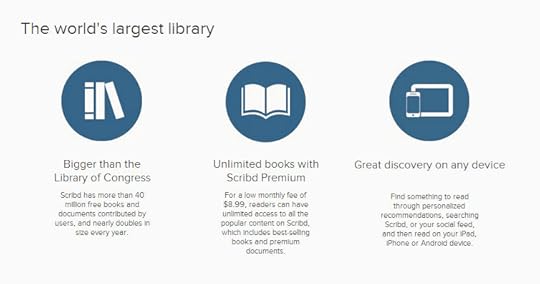
From Scribd’s About section.
I’m in no position to challenge these statements. I don’t have the time to get around the Library of Congress and do the counting.
But I’ll tell you one way in which the information in that About section is confusing. You read this:
Scribd has more than 40 million free books and documents contributed by users.
And then, you read:
For a low monthly fee of $8.99, readers can have unlimited access to all the popular content on Scribd, which includes best-selling books and premium documents.
One minute it’s “free books and documents,” the next it’s “a low monthly fee of $8.99.” I’m sure this is simply a case of messaging needing massaging, Mr. McLuhan, some work needed on the copy. Perhaps the “best-selling books and premium documents” you pay $8.99 to read are in addition to those 40 million free things. And it would be too much to ask them to refer to “40 million free but unpopular books and documents,” of course. Something just isn’t entirely explained here. This is one of those odd confusions we’ll have to just set aside for now—an annoyance more than a substantive problem.
Further complicating Scribd’s stance, however, is the fact that it also presents itself as a publishing and distribution platform for your work, if you like. Not unlike Smashwords.
Suffice it to say that Scribd is several things to 80 million people. This is the Ether. We’re good at cognitive dissonance and rugged, sporting moments. No problem.
Let’s get back to the question of how authors are to be compensated in these subscription models.
Paying publishers 60% of the list price when readers read 10% of their book looks like a subscription suicide note: http://t.co/QfzGiByFx4
— alastair horne (@pressfuturist) November 3, 2013
Let’s Prop Up the Oyster Bar, Want To?
Coker’s posts, parts 1 and 2, are both dated October 29. He writes:
In public, Scribd and Oyster have been conspicuously cagey about the nitty gritty details of how they compensate publishers.
He then refers to an October 17 piece at Digital Book World from Jeremy Greenfield, Scribd CEO Trip Adler on the Economics of Ebook Subscription Models, the ‘Big Five,’ and the Competition and to a piece from even earlier, October 1, in which Laura Hazard Owen at GigaOM introduced Scribd’s offer, Scribd moves beyond document sharing with $8.99/month ebook subscription service.
Neither of these references answers the question Coker has raised—how much do authors get paid on these services? The caginess he mentions stays in place.

Laura Hazard Owen
And yet four days before his October 29 pieces run, Owen’s has this piece on October 25, brilliantly headlined Here’s how much Smashwords authors will get paid through ebook subscription service Oyster. She writes:
Self-publishing distributor Smashwords is letting its authors include their ebooks in Oyster. On Friday, Smashwords CEO Mark Coker sent authors and publishers an email explaining how the financial terms of the arrangement will work:
“As a Smashwords author or publisher, you’ll earn 60 percent of your book’s retail list price whenever an Oyster subscriber reads more than 10 percent of your book, starting from the beginning of the book forward. It’s an author-friendly model. That’s the same rate Smashwords authors earn when we sell ebooks through the major retailers such as Apple and Barnes and Noble.”
I’m hearing that marvelous old song “Who’s Cagey Now?” Connie Francis, right?
What Owen has described from Coker’s email is heartening to some, if not to all. An author getting 60 percent of a book’s retail price when a subscriber reads more than 10 percent of that book? Honestly, we just have to see that work for a while. And we need some authors willing to tell us what that means they’re netting over time.
And Owen cautions:
This is not necessarily the same arrangement that Oyster has with other publishers it works with, like HarperCollins and Barnes & Noble. “Each contract we negotiate is unique to the preferences and priorities of our partners. Publishers are paid when their books are read,” Oyster CEO Eric Stromberg told me in an email. “There are several elements that go into determining if a book is read, and the amount they are paid is calculated based on the digital price of that book.” Nonetheless, the Smashwords policy provides a hint at the way that payment models can work for platforms like this.
Lunch! #nyc @ Grand Central Oyster Bar http://t.co/wGMoY4kHLp
— Eugenie Sills (@esills) November 1, 2013
She goes on to add some cautionary guidance that Coker wisely offers his authors in that email about keeping “sales expectations realistic” in such a new setting as Oyster. There is an agreement for the service to promote Smashwords books that prove popular with subscribers, his email tells Owen. Her article of the 25th is well worth reading in its entirely as the closest thing we’ve had to a look inside this new distribution/sales direction.
Still, there’s that big elephant ice sculpture in the middle of the buffet. We’re almost there.
WOW…I'm on Smashwords. When did that happen? Looking at The Gift by Kat Deacon at #smashwords https://t.co/EySrWp605e #publishingwoes
— sinoo7/KatDeacon (@sinoo7) November 7, 2013
So Much on This Buffet, How Do They Swing the Price?
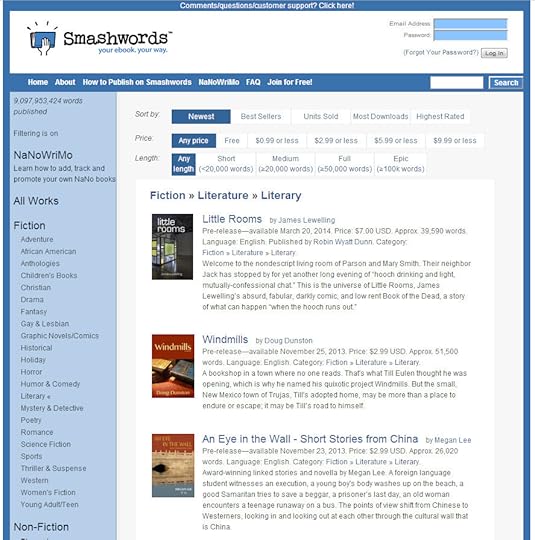
Part of the literary fiction listings page at Smashwords.
In an interesting sequence in Part 1 of his blog post, Coker explains that he thinks the subscription services like Oyster and/or Scribd can succeed financially because they’ll be underused by many members. He first suggests that most people at an all-you-can-eat buffet “will consume in moderation over time.” Then:
Perhaps an even more apt parallel would be how health clubs sell memberships. They know that many subscribers rarely take full advantage of their services. A health club membership, like an ebook service subscription, is often an aspirational purchase for subscribers. As long as the reader wants to increase their reading in the future, they’re likely to maintain their subscription, even if they don’t actually read more.
Interesting concept. World-class athlete that I am, I do know that everybody’s in the gym with me on Monday, fighting for air and the Smith machine. And then they’re gone the rest of the week. No stamina. For that matter, they’re all in the gym for January, then gone by February. Wusses. Coker’s right that this kind of usage occurs in contexts of unlimited usage.
But there’s also something a bit sad about that, especially with books. If underuse by many subscribers is the way such services need to succeed, then we’re basically hoping that an awful lot of books will go unread; that an awful lot of subscribers won’t use their subscriptions; that an awfully big part of the all-you-can-read business will really be we-hope-you-won’t-read.
Is this good for literature (of all genres)? Really? Think about it.
Oyster travel card and Oyster ebook subscription service. Why on earth did either of these companies think we’d associate oysters with tech?
— Joel Naoum (@joelnaoum) October 17, 2013
And here’s where I can explain to you the concept of books priced as free that Coker mentions. He’d written, you’ll remember, that 20,000 of those 200,000 titles he’s “shipping over” to Oyster are priced at free. Why is this good? Because, he writes:
Oyster subscribers can enjoy these [free] titles with gluttonous abandon at no cost to Oyster.
So Smashwords, in fact, is subsidizing Oyster to some degree by supplying 20,000 books the subscription service does not have to pay him for. We can assume, I think, that the authors of those 20,000 won’t get paid for them, then? Unless Smashwords, itself, pays the authors for those books when read? Mark, you sweetheart. Just kidding.
It looks like a tenth of the huge pile of ebooks Coker is sending to Oyster will be readable by subscribers without compensation to their authors. That’s the implication of this point.
Next, and finally, we’ll look at what really worries me about these subscription initiatives and books.
@bradmcnally @oyster It's their own ecosystem … (Which == Kindle competition which == good for all)
— Craig Mod (@craigmod) October 16, 2013
They’ve Got Dessert Here Somewhere, Get a Little Plate
As we slide into home here, I’d like to reiterate that I appreciate Coker’s write because it’s the best basis for real discussion of this issue I’ve found. The “subscription question” is one that seems to cause people to speed up, rush on by, don’t look too closely at. So much whistling is going on that you’d think we were passing a graveyard. This is how we know we need to slow down and face this, and Coker’s write(s) are a big help for just that. He’s keying a lot of issues we need to consider.
The big one, for me, is what happens to books when they suddenly are on that buffet? All-you-can-read. Go back as many times as you like.
What changes? Anything? Nothing?
I have been in the UK for almost a week now and no one has handed me a complimentary corgi to cuddle. What's up with that?
— Ginger Clark (@Ginger_Clark) November 6, 2013
Coker, in Part 2, you’ll remember, talks of “How eBook Subscription Services May Redefine the Value of Books.” This is his excitement and my fear.
He and I agree on this, as he writes it:
Subscription services make books feel essentially free to their subscribers. This means consumer purchase behavior will be liberated from the cognitive calculus every consumer performs at conventional retailers when they weigh their desire for a prospective purchase against the list price of that book. As we found in the last two years in our annual Smashwords survey, and as conforms to general economic theory, lower cost goods generally get consumed more. The human species and psyche evolved to binge in times of plenty and conserve in times of scarcity.
So then he asks, “What happens when every book feels free from the consumer’s perspective?”
He answers, in part:
Friction-free subscription ebooks will alter the competitive fight for reader eyeballs. The reader won’t know the difference between a free book and a $12.99 book. Since the retail price is almost irrelevant to the reader, the authors and publishers listed in these subscription services can’t compete on price. Instead, it’ll be more about the book.
Point taken. We can follow that argument. When money is no longer an object, as it were, you’re going to judge a book strictly by its cover or its prose or its story or characters or whatever else strikes you.
Playing the Oyster card | FutureBook http://t.co/l2LFvOArjz Good piece from @Tim_Inman1 in light of today's Scribd deal
— Philip Jones (@philipdsjones) October 1, 2013
In a list of things Coker writes that he thinks will be “dominant consumption drivers,” he includes “author marketing”:
Indie authors are building captive fanbases on Facebook, Twitter, blogs and on their private mailing lists. Authors have the power to direct their fans to stores. Will authors promote these subscription services with the same – or more – gusto than they promote their conventional ebook retailer outlets? Authors who distribute to the subscription services, at least initially, will face less competition for readers because they’re competing against a few hundred thousand books, rather than millions of books at the major retailers.
Yes, there are probably recommendations in that paragraph from the Chief Author Advocate. (Get out there and promote your books at Oyster.) That’s fine, even if “captive” fan bases is probably wishful thinking. (Are we doing reader-kidnap marketing yet?)
Where I’m worried is back at the most basic premise: all you can read.
My therapist's office now has a basket of Dum-Dums in the lobby. Analyze the implications of that.
— Olivia M. Giovetti (@ogiovetti) November 7, 2013
Do you value the tomatoes in their stainless steel container on the salad bar as much as you’d value the same tomatoes in a salad prepared by the chef for you in the kitchen? And how about those straight-to-stream films? The ones with the actors who look weirdly like box-office draws but, in fact, you’ve never heard of these pod people?
Salad bars and B-movies may not be perfect correlates to books sold in vast all-you-can-read programs like Oyster and Scribd, but the important question here is as free to read as the handwriting on any other hot buffet wall.
Coker writes of “this new world of ebook retailing” in which “readers demand high-quality, low cost, high-availabiity books.” His point is that independent authors are “best positioned to thrive” in that new world. And he may be right. He may be wrong.
But when he proposes that “readers will feel closer and more connected to books,” I’m really not so sure, any more than Coker can actually be sure. We haven’t seen this yet. And this new level of commoditization of books doesn’t look to me like something likely to make readers value books more.
Coker:
If reader engagement with books increases, book access will become more valuable to readers.
Notice that he’s saying book access will become more valuable. Not books, themselves.
The manuscript I'm reading, like some of my tweets, has 140 characters too many.
— Jonny Geller (@JonnyGeller) November 5, 2013
Logically, Coker needs mechanisms for distribution. Access. That’s what his business sells. Distribution, access. GigaOM’s Owen has written of Oyster having “real books you’ve heard of, from real publishers.” But not enough of them. Oyster needs books you haven’t heard of, too, to create enough depth to offer to a buffet reader. Got it.
The more ways Coker can tell authors he’s distributing their work, the better his platform looks to them. Perfectly understandable.
The more hundreds of thousands of titles Oyster can tell buffet readers it has, the better it looks to them. Perfectly understandable.
What is not yet understandable—and what we must wait to find out—is what happens to literature of all genres, independent of Smashwords and Oyster, what happens to books in the buffet readers’ world?
I don’t value film as I once did. Maybe I’m completely alone on that. You can tell me so in the comments, if you like. But on-demand viewing has made movies interchangeable with many other entertainments for many of us. B-grade selection-deepening productions have made the field at once broader and shallower, harder to catalog in the mind, easier to skim over or to pass over completely for an equally boggling array of television programming.
Bus driver was a babe, didn't have enuff on my oyster so he waited at the shop while I topped it up
— GypsyCyrus xcx (@s4mir4yy) November 7, 2013
Earlier this week, I found myself paraphrasing Noel Coward, and I can do it again now: Extraordinary how potent cheap entertainments are.
Ellora’s Cave and some other romance and/or erotica publishers will tell you that subscription book programs have been around for a long time. And so they have. In some settings they’ve worked very well. Have they brought readers closer to literature? I’m not sure. Are you?
These mainstream buffets are a new development that might be good for distribution, yes, indeed.
And for literature of all genres? Will it be good?
Get ready to find out. Here come the buffet readers.
Sausage roll, anyone? Tell me what you think. I’m checking to see if we have more shrimp. I mean Camus.
http://t.co/Lhuzom2NeN: Manhattan is Adam's Oyster (Panflick History) eBook: Stephen C. Rose: Kindle Store http://t.co/kIP7F9GT8A
— Stephen C. Rose (@stephencrose) November 4, 2013
Main image: iStockphoto – jxfzsy
The post Writing on the Ether: Here Come the Buffet Readers — Subscription Book Services appeared first on Jane Friedman and was written by Porter Anderson.
Writing on the Ether: Here Come the Buffet Readers
Table of Contents
Sorry, Can You Pass Me That Camus by the Buffalo Wings?
There’s a Sauce for That Kingsolver, Did You Try It?
Oh, McDowell on Toast Points. It’s Not Rabbit, Is It?
Look, Another Kind of Rice, Anne, Let’s Try It
Let’s Prop Up the Oyster Bar, Want To?
So Much on This Buffet, How Do They Swing the Price?
They’ve Got Dessert Here Somewhere, Get a Little Plate
Sorry, Can You Pass Me That Camus by the Buffalo Wings?
When talk of ebook subscription services surfaced in months past, there was much hand-wringing in the publishing community that such services would devalue books and harm publishers and authors.
Two of the hands doing the wringing were mine. They still are.

Mark Coker
But this is Mark Coker, founder, CEO, and “Chief Author Advocate,” as his bio says, at Smashwords, the self-publishing platform. Coker has written an extensive, two-part essay at the Smashwords blog, hinged on the topic of the newly launched book subscription services. These lines are from the first section of his two parter. Examining the Business Model of Ebook Subscription Services, Parts 1 and 2—the second has its own headline, How Ebook Subscription Services May Redefine the Value of Books—are the lengthiest treatments of the subject I’ve seen. As such, they’re very welcome. He goes on:
Yet as the launches of Oyster and Scribd indicate, some (but not all) of those skeptics were silenced once they learned the publisher-friendly nature of the compensation models. Several small publishers and one Big 5 publisher – HarperCollins – signed on to work with both Scribd and Oyster. Smashwords announced an agreement with Oyster last month. We’re now in the process of shipping over 200,000 ebooks to them as I write.
As a hand-wringer here, I’m one of the “but not all” skeptics Coker mentions, unpersuaded, and how good that he’s careful to note that we’re not all mollified. For me it’s not the compensation issue, actually. I’m more concerned about how literature of all genres (don’t get sidetracked here, I mean all books) fare on the buffet.
But let’s go slowly here, and figure out on which end of this thing you’re supposed to get a plate and some silverware.
Our team is reading this for our next book club, so thought we'd share with you: http://t.co/54bR2p2U2f #OysterDaily pic.twitter.com/tXZlhtwRiT
— Oyster (@Oyster) November 6, 2013
There’s a Sauce for That Kingsolver, Did You Try It?
What was the last book you read that was published through Smashwords?
 In earlier reports, we’ve learned that the platform has passed an impressive milestone this year, with more than 250,000 titles having gone through its operation. Congratulations are in order for that. And, of course, this tells us that Coker is making a very big commitment to Oyster, the 200,000 titles he’s “shipping over” representing some four-fifths of his platform’s output.
In earlier reports, we’ve learned that the platform has passed an impressive milestone this year, with more than 250,000 titles having gone through its operation. Congratulations are in order for that. And, of course, this tells us that Coker is making a very big commitment to Oyster, the 200,000 titles he’s “shipping over” representing some four-fifths of his platform’s output.
What’s more, 20,000 of the books being “shipped over,” he writes, are “priced at FREE” (caps his). This is mildly confusing, I know. If you pay for unlimited access and start reading your way through books available at Oyster’s buffet, aren’t they all “free” to you? We’ll set that little confusion aside for now: I’m going to tell you what he means by it a bit later. And you’ll find it interesting. Just park that bit about the 20,000 “free” books for now.
Let me be clear in saying that nothing Coker is doing or saying is wrong. Some of it may be a bit confusing at some points, which might be one motivation for his two-part post, actually. But he and the authors who have published with Smashwords—which classifies itself as “a distributor of indie ebooks”—are distributing, exactly, making their work available to subscribers of the fledgling Oyster program. And that’s fine. This could be a deal to sell the ebooks via Publix supermarkets or Walgreens pharmacies, and that would be fine, too.
"An oyster cook book you'll want to read cover to cover" Oyster Delight – http://t.co/t6GJU5OHm8
@CruisingKitty #goodfood
— Alex Blackwell (@AlexMBlackwell) November 5, 2013
Oh, McDowell on Toast Points. It’s Not Rabbit, Is It?
Currently, the Oyster homepage (really attractive, by the way) tells you that it offers “over 100,000 books at your fingertips.” It should be “more than,” rather than “over,” but nobody likes an editor anymore, so just shut my mouth.
The deal is all you can read for $9.95 a month, and a first month free as a trial, too, which is cool. If the site boasts now of more than 100,000 titles, Smashwords’ agreement with them will be making that total more than double. You may not have heard of a lot of the books “shipping over” from Smashwords, but that doesn’t mean they’re not worth reading, of course, just that they’re not known. This, in fact, is part of the great slush pile we talk about self-published ebooks becoming.
And folks who want access to books on an all-you-can-read basis, surely, can’t expect everything they pick up to be something that’s familiar from mainstream press coverage, bookstore visibility, book club evangelism, big-publishers’ ads, or other means. Perhaps part of the allure is the thought that you may find the next Didion as a complete unknown, waiting for you in book from Smashwords or another source on Oyster, right?
@pablod I heard "Rockin' Around the Christmas Tree" in the pharmacy at lunchtime today. Make it stop.
— Don Linn (@DonLinn) November 6, 2013
A subscription service of the all-you-can-read kind—just like Netflix for film and television, as we so frequently hear in comparative recitatives—must, perforce, include a lot of material that’s not necessarily widely popular.
You know the phrase “straight to video,” of course. It’s used to refer to a film that’s produced without screenings in cinemas. Many productions are made without the slightest hope or intention of cinema exposure. “Straight to video”—which we probably should update to “straight to stream” soon—is why there are all those B-grade films you’ve never heard from. They’ve had no theatrical release.
So here are Oyster and Scribd with their all-you-can-read subscriptions. We can expect some offerings to seem like straight-to-subscription books.
@micahsb It's exciting news. They've joined Oyster & Scribd. Now, they go direct. Kudos @HarperCollins
— Julieta Lionetti (@JulietaLionetti) October 30, 2013
Look, Another Kind of Rice, Anne, Let’s Try It
Not as graciously homepaged (not a verb, I made that up), Scribd nevertheless is fully in step with its times. Its subscribe-now prompts show us inquisitive and attractive young adults, surely vegetarians, reading, reading, reading…and in the guy’s case, reading outdoors in an obviously rugged, sporting moment. Just like you and me.
Scribd’s subscription is going for $8.99 per month. Scribd, in fact, is a more complicated beastie than the Oyster. If you bump up the tiny font of its About section, you read:
Scribd is the world’s largest digital library, where readers can discover books and written works of all kinds on the Web or any mobile device and publishers and authors can find a voracious audience for their work. Launched in March of 2007 and based in San Francisco California, more than 40 million books and documents have been contributed to Scribd by the community. Scribd content reaches an audience of 80 million people around the world every month.
That “largest digital library” phrase is interesting, isn’t it? The site quickly dispenses with “digital,” in fact, and in the same About section announces Scribd to be “the world’s biggest library”…”bigger than the LIbrary of Congress”…”nearly doubles in size every year.”

From Scribd’s About section.
I’m in no position to challenge these statements. I don’t have the time to get around the Library of Congress and do the counting.
But I’ll tell you one way in which the information in that About section is confusing. You read this:
Scribd has more than 40 million free books and documents contributed by users.
And then, you read:
For a low monthly fee of $8.99, readers can have unlimited access to all the popular content on Scribd, which includes best-selling books and premium documents.
One minute it’s “free books and documents,” the next it’s “a low monthly fee of $8.99.” I’m sure this is simply a case of messaging needing massaging, Mr. McLuhan, some work needed on the copy. Perhaps the “best-selling books and premium documents” you pay $8.99 to read are in addition to those 40 million free things. And it would be too much to ask them to refer to “40 million free but unpopular books and documents,” of course. Something just isn’t entirely explained here. This is one of those odd confusions we’ll have to just set aside for now—an annoyance more than a substantive problem.
Further complicating Scribd’s stance, however, is the fact that it also presents itself as a publishing and distribution platform for your work, if you like. Not unlike Smashwords.
Suffice it to say that Scribd is several things to 80 million people. This is the Ether. We’re good at cognitive dissonance and rugged, sporting moments. No problem.
Let’s get back to the question of how authors are to be compensated in these subscription models.
Paying publishers 60% of the list price when readers read 10% of their book looks like a subscription suicide note: http://t.co/QfzGiByFx4
— alastair horne (@pressfuturist) November 3, 2013
Let’s Prop Up the Oyster Bar, Want To?
Coker’s posts, parts 1 and 2, are both dated October 29. He writes:
In public, Scribd and Oyster have been conspicuously cagey about the nitty gritty details of how they compensate publishers.
He then refers to an October 17 piece at Digital Book World from Jeremy Greenfield, Scribd CEO Trip Adler on the Economics of Ebook Subscription Models, the ‘Big Five,’ and the Competition and to a piece from even earlier, October 1, in which Laura Hazard Owen at GigaOM introduced Scribd’s offer, Scribd moves beyond document sharing with $8.99/month ebook subscription service.
Neither of these references answers the question Coker has raised—how much do authors get paid on these services? The caginess he mentions stays in place.

Laura Hazard Owen
And yet four days before his October 29 pieces run, Owen’s has this piece on October 25, brilliantly headlined Here’s how much Smashwords authors will get paid through ebook subscription service Oyster. She writes:
Self-publishing distributor Smashwords is letting its authors include their ebooks in Oyster. On Friday, Smashwords CEO Mark Coker sent authors and publishers an email explaining how the financial terms of the arrangement will work:
“As a Smashwords author or publisher, you’ll earn 60 percent of your book’s retail list price whenever an Oyster subscriber reads more than 10 percent of your book, starting from the beginning of the book forward. It’s an author-friendly model. That’s the same rate Smashwords authors earn when we sell ebooks through the major retailers such as Apple and Barnes and Noble.”
I’m hearing that marvelous old song “Who’s Cagey Now?” Connie Francis, right?
What Owen has described from Coker’s email is heartening to some, if not to all. An author getting 60 percent of a book’s retail price when a subscriber reads more than 10 percent of that book? Honestly, we just have to see that work for a while. And we need some authors willing to tell us what that means they’re netting over time.
And Owen cautions:
This is not necessarily the same arrangement that Oyster has with other publishers it works with, like HarperCollins and Barnes & Noble. “Each contract we negotiate is unique to the preferences and priorities of our partners. Publishers are paid when their books are read,” Oyster CEO Eric Stromberg told me in an email. “There are several elements that go into determining if a book is read, and the amount they are paid is calculated based on the digital price of that book.” Nonetheless, the Smashwords policy provides a hint at the way that payment models can work for platforms like this.
Lunch! #nyc @ Grand Central Oyster Bar http://t.co/wGMoY4kHLp
— Eugenie Sills (@esills) November 1, 2013
She goes on to add some cautionary guidance that Coker wisely offers his authors in that email about keeping “sales expectations realistic” in such a new setting as Oyster. There is an agreement for the service to promote Smashwords books that prove popular with subscribers, his email tells Owen. Her article of the 25th is well worth reading in its entirely as the closest thing we’ve had to a look inside this new distribution/sales direction.
Still, there’s that big elephant ice sculpture in the middle of the buffet. We’re almost there.
WOW…I'm on Smashwords. When did that happen? Looking at The Gift by Kat Deacon at #smashwords https://t.co/EySrWp605e #publishingwoes
— sinoo7/KatDeacon (@sinoo7) November 7, 2013
So Much on This Buffet, How Do They Swing the Price?

Part of the literary fiction listings page at Smashwords.
In an interesting sequence in Part 1 of his blog post, Coker explains that he thinks the subscription services like Oyster and/or Scribd can succeed financially because they’ll be underused by many members. He first suggests that most people at an all-you-can-eat buffet “will consume in moderation over time.” Then:
Perhaps an even more apt parallel would be how health clubs sell memberships. They know that many subscribers rarely take full advantage of their services. A health club membership, like an ebook service subscription, is often an aspirational purchase for subscribers. As long as the reader wants to increase their reading in the future, they’re likely to maintain their subscription, even if they don’t actually read more.
Interesting concept. World-class athlete that I am, I do know that everybody’s in the gym with me on Monday, fighting for air and the Smith machine. And then they’re gone the rest of the week. No stamina. For that matter, they’re all in the gym for January, then gone by February. Wusses. Coker’s right that this kind of usage occurs in contexts of unlimited usage.
But there’s also something a bit sad about that, especially with books. If underuse by many subscribers is the way such services need to succeed, then we’re basically hoping that an awful lot of books will go unread; that an awful lot of subscribers won’t use their subscriptions; that an awfully big part of the all-you-can-read business will really be we-hope-you-won’t-read.
Is this good for literature (of all genres)? Really? Think about it.
Oyster travel card and Oyster ebook subscription service. Why on earth did either of these companies think we’d associate oysters with tech?
— Joel Naoum (@joelnaoum) October 17, 2013
And here’s where I can explain to you the concept of books priced as free that Coker mentions. He’d written, you’ll remember, that 20,000 of those 200,000 titles he’s “shipping over” to Oyster are priced at free. Why is this good? Because, he writes:
Oyster subscribers can enjoy these [free] titles with gluttonous abandon at no cost to Oyster.
So Smashwords, in fact, is subsidizing Oyster to some degree by supplying 20,000 books the subscription service does not have to pay him for. We can assume, I think, that the authors of those 20,000 won’t get paid for them, then? Unless Smashwords, itself, pays the authors for those books when read? Mark, you sweetheart. Just kidding.
It looks like a tenth of the huge pile of ebooks Coker is sending to Oyster will be readable by subscribers without compensation to their authors. That’s the implication of this point.
Next, and finally, we’ll look at what really worries me about these subscription initiatives and books.
@bradmcnally @oyster It's their own ecosystem … (Which == Kindle competition which == good for all)
— Craig Mod (@craigmod) October 16, 2013
They’ve Got Dessert Here Somewhere, Get a Little Plate
As we slide into home here, I’d like to reiterate that I appreciate Coker’s write because it’s the best basis for real discussion of this issue I’ve found. The “subscription question” is one that seems to cause people to speed up, rush on by, don’t look too closely at. So much whistling is going on that you’d think we were passing a graveyard. This is how we know we need to slow down and face this, and Coker’s write(s) are a big help for just that. He’s keying a lot of issues we need to consider.
The big one, for me, is what happens to books when they suddenly are on that buffet? All-you-can-read. Go back as many times as you like.
What changes? Anything? Nothing?
I have been in the UK for almost a week now and no one has handed me a complimentary corgi to cuddle. What's up with that?
— Ginger Clark (@Ginger_Clark) November 6, 2013
Coker, in Part 2, you’ll remember, talks of “How eBook Subscription Services May Redefine the Value of Books.” This is his excitement and my fear.
He and I agree on this, as he writes it:
Subscription services make books feel essentially free to their subscribers. This means consumer purchase behavior will be liberated from the cognitive calculus every consumer performs at conventional retailers when they weigh their desire for a prospective purchase against the list price of that book. As we found in the last two years in our annual Smashwords survey, and as conforms to general economic theory, lower cost goods generally get consumed more. The human species and psyche evolved to binge in times of plenty and conserve in times of scarcity.
So then he asks, “What happens when every book feels free from the consumer’s perspective?”
He answers, in part:
Friction-free subscription ebooks will alter the competitive fight for reader eyeballs. The reader won’t know the difference between a free book and a $12.99 book. Since the retail price is almost irrelevant to the reader, the authors and publishers listed in these subscription services can’t compete on price. Instead, it’ll be more about the book.
Point taken. We can follow that argument. When money is no longer an object, as it were, you’re going to judge a book strictly by its cover or its prose or its story or characters or whatever else strikes you.
Playing the Oyster card | FutureBook http://t.co/l2LFvOArjz Good piece from @Tim_Inman1 in light of today's Scribd deal
— Philip Jones (@philipdsjones) October 1, 2013
In a list of things Coker writes that he thinks will be “dominant consumption drivers,” he includes “author marketing”:
Indie authors are building captive fanbases on Facebook, Twitter, blogs and on their private mailing lists. Authors have the power to direct their fans to stores. Will authors promote these subscription services with the same – or more – gusto than they promote their conventional ebook retailer outlets? Authors who distribute to the subscription services, at least initially, will face less competition for readers because they’re competing against a few hundred thousand books, rather than millions of books at the major retailers.
Yes, there are probably recommendations in that paragraph from the Chief Author Advocate. (Get out there and promote your books at Oyster.) That’s fine, even if “captive” fan bases is probably wishful thinking. (Are we doing reader-kidnap marketing yet?)
Where I’m worried is back at the most basic premise: all you can read.
My therapist's office now has a basket of Dum-Dums in the lobby. Analyze the implications of that.
— Olivia M. Giovetti (@ogiovetti) November 7, 2013
Do you value the tomatoes in their stainless steel container on the salad bar as much as you’d value the same tomatoes in a salad prepared by the chef for you in the kitchen? And how about those straight-to-stream films? The ones with the actors who look weirdly like box-office draws but, in fact, you’ve never heard of these pod people?
Salad bars and B-movies may not be perfect correlates to books sold in vast all-you-can-read programs like Oyster and Scribd, but the important question here is as free to read as the handwriting on any other hot buffet wall.
Coker writes of “this new world of ebook retailing” in which “readers demand high-quality, low cost, high-availabiity books.” His point is that independent authors are “best positioned to thrive” in that new world. And he may be right. He may be wrong.
But when he proposes that “readers will feel closer and more connected to books,” I’m really not so sure, any more than Coker can actually be sure. We haven’t seen this yet. And this new level of commoditization of books doesn’t look to me like something likely to make readers value books more.
Coker:
If reader engagement with books increases, book access will become more valuable to readers.
Notice that he’s saying book access will become more valuable. Not books, themselves.
The manuscript I'm reading, like some of my tweets, has 140 characters too many.
— Jonny Geller (@JonnyGeller) November 5, 2013
Logically, Coker needs mechanisms for distribution. Access. That’s what his business sells. Distribution, access. GigaOM’s Owen has written of Oyster having “real books you’ve heard of, from real publishers.” But not enough of them. Oyster needs books you haven’t heard of, too, to create enough depth to offer to a buffet reader. Got it.
The more ways Coker can tell authors he’s distributing their work, the better his platform looks to them. Perfectly understandable.
The more hundreds of thousands of titles Oyster can tell buffet readers it has, the better it looks to them. Perfectly understandable.
What is not yet understandable—and what we must wait to find out—is what happens to literature of all genres, independent of Smashwords and Oyster, what happens to books in the buffet readers’ world?
I don’t value film as I once did. Maybe I’m completely alone on that. You can tell me so in the comments, if you like. But on-demand viewing has made movies interchangeable with many other entertainments for many of us. B-grade selection-deepening productions have made the field at once broader and shallower, harder to catalog in the mind, easier to skim over or to pass over completely for an equally boggling array of television programming.
Bus driver was a babe, didn't have enuff on my oyster so he waited at the shop while I topped it up
— GypsyCyrus xcx (@s4mir4yy) November 7, 2013
Earlier this week, I found myself paraphrasing Noel Coward, and I can do it again now: Extraordinary how potent cheap entertainments are.
Ellora’s Cave and some other romance and/or erotica publishers will tell you that subscription book programs have been around for a long time. And so they have. In some settings they’ve worked very well. Have they brought readers closer to literature? I’m not sure. Are you?
These mainstream buffets are a new development that might be good for distribution, yes, indeed.
And for literature of all genres? Will it be good?
Get ready to find out. Here come the buffet readers.
Sausage roll, anyone? Tell me what you think. I’m checking to see if we have more shrimp. I mean Camus.
http://t.co/Lhuzom2NeN: Manhattan is Adam's Oyster (Panflick History) eBook: Stephen C. Rose: Kindle Store http://t.co/kIP7F9GT8A
— Stephen C. Rose (@stephencrose) November 4, 2013
Main image: iStockphoto – jxfzsy
The post Writing on the Ether: Here Come the Buffet Readers appeared first on Jane Friedman and was written by Porter Anderson.
November 1, 2013
How a Collection of Stories Comes Together

photo by Peter Yoon
In the latest Glimmer Train bulletin, Laura van den Berg discusses the evolution of how her stories get written and shaped into a collection, or a book. She begins:
In my early days of writing stories, I somehow came to operate under the following assumption: whenever you amassed 200 pages worth of fiction, your work would undergo a miraculous transformation into a book. I took my first stab at writing a story collection in college. The result was a 210 page manuscript entitled Hush, an ungainly mishmash of domestic realism, ill-conceived Beckett homages, and flash fictions about trees with real human feelings (true story!). While I can think of many excellent collections that demonstrate great stylistic and technical range, the “eclectic” approach was not working for me.
She goes on to discuss the difference between a “group” of stories and a collection. Read the entire piece.
Other pieces in this month’s bulletin:
Reading Before Writing by Roxana Robinson
Habits by Samsun Knight
Empathy by Ming Holden
The Writer-Traveler by Lisa Gornick
The post How a Collection of Stories Comes Together appeared first on Jane Friedman and was written by Jane Friedman.
October 31, 2013
Writing on the Ether: The Haunting of NaNoWriMo
Table of Contents
NoDon’tWriNoMo
What Makes NaNoWriMoNoGo for Me?
Where’s the Fire?
NoDon’tWriNoMo
Being only 28 years old (prematurely aged by overindulgence on the Ether, you know), it’s a long time before I’ll be swiping Kindle pages of the eBook of Life toward that Heavenly Afterword.
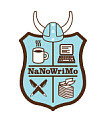 But if I were to guess some things that I might want to come back and haunt in the industry! the industry! one of them high on my list would be NaNoWriMo.
But if I were to guess some things that I might want to come back and haunt in the industry! the industry! one of them high on my list would be NaNoWriMo.
You see—prepare for a gasp—I just don’t like NaNoWriMo.
Put that copy of Eleanor Catton back down. True, I’d be honored to be crushed by a Man Booker Prize-winner. But heaving The Luminaries at me is unfair. It’s an 848-page New Zealand boulder. I deserve a fighting chance. Pelt me with Kindle Singles instead.
It's just past midnight in NZ! That means the start of #NaNoWriMo!!!
— Shocking Blankets (@ShockingBlanket) October 31, 2013
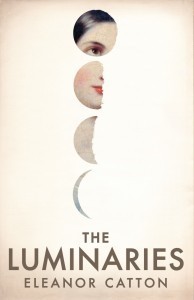 And before you throw this column across the room, as well, and hurt your mobile device, do note that I’ve linked up NaNoWriMo to its site so you can find it. In fact, here you go: this is the sign-up page. Go sign up if you’d like. No kidding, you go. Tell them I sent you.
And before you throw this column across the room, as well, and hurt your mobile device, do note that I’ve linked up NaNoWriMo to its site so you can find it. In fact, here you go: this is the sign-up page. Go sign up if you’d like. No kidding, you go. Tell them I sent you.
Even better: May I offer you this totally cool NaNoWriMo Word Meter? You update this baby with your word count, and then copy the code so you can drop it somewhere and display, display, display your progress with my blessing. (My thanks to the Euro-touring Hugh Howey, from whom I learned about this nifty gizmo. I’m expecting him to start one with his SkyMiles count soon as he becomes a Million Miler, never mind the Kindle Million Club.)

Roz Morris
And hey, are you worried about starting NaNoTomorro and getting your 50,000 words done without losing your marriage and your mind? Then I’ve got another resource for you: author and coach Roz Morris is one of the best writers on getting your NaN-sense going. She recommends that you prepare for it, particularly in terms of characters. Know who you want to write, lots of details and parameters, etc., rather than taking the NumbNoWriMo not-a-thought-in-one’s-head approach that some folks try.
In Generate Your NaNoWriMo Novel by Developing Its Characters, Morris writes:
If I had to choose whether to outline plot or characters in detail, I’d spend the time on creating the characters. Why? Once I know who my fictional people are, they start acting, talking and steering the show – merely by being themselves. This smooths the writing process enormously, helps you write in a natural flow. It’s especially useful for a project like NaNoWriMo, where you want to get your word count done – but still have fun.
I’d even add that if you haven’t had that chance to prep, then make your first day of NaNoWriMo just that. Write out your plan as the first installment of your word count, tell them I said it was fine. I’d really rather see you do some thinking, as Morris suggests, than feel you just have to dive in with that dark and stormy night stuff at the beginning.
And that’s not all.
 Let me offer you, again this year, the opportunity to use one of my favorite sanity savers, RescueTime and its cloak of Internet invisibility, FocusTime, free for the big month. Joe Hruska and Robby MacDonald at RescueTime are again going to have a look at what can be learned about NaNoWriMo participants’ behavior patterns from the scans that RescueTime makes and they’re hoping you’ll give this excellent software a try free of charge.
Let me offer you, again this year, the opportunity to use one of my favorite sanity savers, RescueTime and its cloak of Internet invisibility, FocusTime, free for the big month. Joe Hruska and Robby MacDonald at RescueTime are again going to have a look at what can be learned about NaNoWriMo participants’ behavior patterns from the scans that RescueTime makes and they’re hoping you’ll give this excellent software a try free of charge.
By way of disclosure: I’m an affiliate with RescueTime, having used and loved it for years. If you use my link, you can get a free trial anytime, not just during November. Or, jump in and sign up on the NaNoWriMo project during November. You don’t even have to do NaNo to try it.

Rachelle Gardner
Our good colleague and literary agent Rachelle Gardner, in fact, has written about it here, in Five Habits of Motivated Novelists, in case you’d like to know more.
Gardner will be on the panel I’m moderating on November 13 at 10 a.m. ET / 7 a.m. PT / 1500 GMT in the Get Read (#GetRead) online conference, along with Eve Bridburg of Grub Street and Kristen McLean of Bookigee’s WriterCube.
See? You get it all! as they say on the infomercials. And I’ll even go so far as to tip my hat to the many sponsors of this year’s NaNoWriMo — they’re here on this page. Take a moment to recognize all these companies and personal donors who have contributed to the effort.
Big kicker on this section? I have donated, myself, to NaNoWriMo in the past.
And I’m telling you all this because I don’t want you to confuse my opinion of NaNoWriMo with a suggestion that you shouldn’t do it if you want to.
I want you to do what you’ve planned to do. I don’t need to win anything. This is not a competition. It helps me not one bit for you to decide not to do NaNoWriMo because of something I said. I’m here for a bit of discussion that I think this program throws into relief for us each November—more sharply each year—and perhaps you’ll join me in the Comments section with some thoughts of your own.
So go ahead and NaNoTate everything in sight. If you love it, love it a lot. Like Lyle Lovett, remember, “I Love Everybody” and that includes you, NaNoCheeks.
Calm, even serene discourse. That’s all I’m after. Not a fight. Not a contest. Nobody “attacks” anybody or anything here.
You can almost smell a civilized debate approaching, can’t you?
Oh God #NaNoWriMo starts tomorrow. Can I do it? Should I even bother? Brrraaargh I don't know…
— Michael Ward (@mikeward85) October 31, 2013
Finishing my plotting for #NaNoWriMo Excited to get writing next crime novel tomorrow
Are you doing NaNo this year?
— Joanna Penn (@thecreativepenn) October 31, 2013
For those on the fence on doing #nanowrimo, here are 10 lessons I learned by taking the challenge http://t.co/WLxSk1cCED #scriptchat
— Jeanne V Bowerman (@jeannevb) October 31, 2013
#NaNoFreakout 1 – when you realise that your plot is severley lacking in plot #NaNoWriMo #StoryOfMyLife
— Kriszy dee (@KriszyDee) October 31, 2013
Nanowrimo starts tomorrow and I have nothing. Clearly am pretend writer with no ideas at all #block
— Alice Shaw (@AliceShawLand) October 31, 2013
What Makes NaNoWriMoNoGo for Me?
I did NaNoWriMo five years ago. I did it seriously. Wore the turquoise horned helmet. I kept track of those word counts. Then? It caught up with me. I’m not the kind of writer who feels good littering life with disjointed, redundant, “dirty” copy to be sorted “at a later date.”
It occurred to me that I’d rather work on one page per day for 30 days and come up with 30 pages (7,500 words) of reasonably coherent material than with 50,000 words of madly “joyous” abandon. Slinging the verbiage right and left, for me, became a wasteful indulgence.

Chuck Wendig
It’s interesting to read Chuck Wendig (another speaker at the Get Read conference) in The NaNoWriMo Dialogues: Day Zero talking about his own experience:
I tried it and it really didn’t work for me — in fact, it had negative consequences. It made me feel like shit for a little while about the whole writing thing. And back then I was naive enough to assume that when something does or does not work for me it obviously has to be that way for anybody else because we’re all the same precious snowflake, AND I AM MOST PRECIOUS OF THEM ALL. Which is not true, and of course everyone has a process as unique to them as a strand of DNA. What works, works, and NaNoWriMo works for some people very well.
Some of my own experience is there in what Wendig is saying. Not the precious snowflake stuff, of course, because Chuckie is the most precious among us, everybody knows that.
@DonLinn in times like that they need a democratic plane vote.
— Melissa Klug (@melissaklug) October 30, 2013
But the experience of “feeling like shit for a little while about the whole writing thing” sounds right. This is how I felt, in his ever-colorful vernacular. More Wendig I dig:
30 days is a pretty short haul for writing a novel. And 50k is technically novel-length, but publishers are likely going to be reticent about a novel of that length unless it’s young adult, but whatever. And what you finish may not look like much of a book yet.
What he’s describing, to me, adds up to artificiality. For me only, remember. For me only, NaNoWriMo luge-writing felt as natural as lying on my back on a small sled and flying down an icy track feet-first at ridiculous speeds.
Luge or Wine Tasting .. What'd be your pick? http://t.co/jrB6HOJaJG
— Rotorua, New Zealand (@rotoruaNZ) October 31, 2013
Wendig does the right thing, as I’m trying to do, and also points out some good elements of the NaNoWriMo chute:
It gets you used to being on deadline. It forces you to write every day to meet that deadline. It teaches you that if you want to Do This Thing called “writing” then the only way out is through. Really, it teaches you to finish your shit, which is a core tenet of being a writer. And one so few writers manage.
I’m down with those points. The discipline counts. If anything, that’s probably the theoretical part of NaNoWriMo I like the best.
What…what happened to Twitter? Did I need a "more" option? I'm so disoriented.
— Ginger Clark (@Ginger_Clark) October 29, 2013
Keep an eye on Wendig’s blog. He’s going to be coming back with more of these “Dialogues,” he says, and I’m glad he’s doing it, not least because he’s talking “National Write Every Month.” And that’s an element of the thing that bugs me.
This kamikaze autumn thing with all community flags flying, and those inspi-vational email pep talks (this year contributors are to include author Bella Andre, Jeff VanderMeer and James Patterson), and the non-profit donation messages (it’s also a pledge drive, Gladys)…does this feel authentic? Not to me. Just me. Just speaking for myself. This feels like something on a shipboard activity director’s clipboard.
And there’s a more serious issue, in my opinion: Speed kills good work.
#NaNoTip: You can't do @NaNoWriMo wrong! No matter what you write, how you write, where you write, you can't do it wrong! #NaNoWriMo 2013
— NaNoWordSprints (@NaNoWordSprints) October 31, 2013
A small daily task, if it be really daily, will beat the labours of a spasmodic Hercules. ~ Anthony Trollope #Writer #Nanowrimo
— Jonathan Gunson (@JonathanGunson) October 30, 2013
I am SO jealous that the other side of the world is starting #NaNoWriMo which here in New York we still have to get through Halloween first.
— ButterflyPrism (@ButterflyPrism) October 31, 2013
ik ben bezig met een muziek lijst, het uitwerken van personages en het opruimen van mijn bureau. Laat #nanowrimo maar komen hoor!
— hetleeslint (@hetleeslint) October 31, 2013
Why is Halloween the spookiest day of the year? … Because it is the day before @NaNoWriMo! Good luck to you all.
— Virginia Murr (@AthenasProof) October 31, 2013
Where’s the Fire?

Nathan Bransford
Are you an outliner? Are you a seat-of-the-pantser? Do you need peace and quiet? Noise? Do you need to write in a cafe? Would you rather work in a closet? Do you want to write on a computer? A typewriter? Pen and ink? Do you want to write quickly and revise a thousand times? Write a near-perfect first draft slowly? Do you want to write every day? Only on weekends? Do you want to stay up late and burn through fifty pages? Do you want to write during the daylight hours and agonize over five words at a time?
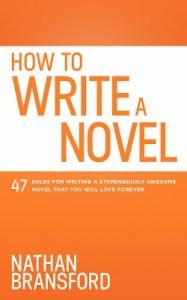 That’s from Nathan Bransford’s new and awfully-orange book, How To Write a Novel, excerpted at his even more orange blog in How to find a writing style that works for you.
That’s from Nathan Bransford’s new and awfully-orange book, How To Write a Novel, excerpted at his even more orange blog in How to find a writing style that works for you.
Bransford may need a color-scheme intervention soon, but I like how he talks of developing a “writing rhythm.”
His main point is about the spectrum between the pantsers and the outliners. It gets us closer to what I think is the real problem of NaNoWriMo. Its artificiality imposes something that may have nothing to do with your or my “writing rhythm.”
Maybe that’s fine with you, and if so, great. It’s not fine with me.
The digital dynamic, which makes it possible for people to publish books with or without traditional publishing support, also seems to be revving many folks into a shared assumption that faster is better.
 I was on about this problem back in June, in Writing on the Ether: Faster, Authors, Faster! And here I am about it again because NaNoWriMo amplifies this bid for publishing speed, of course.
I was on about this problem back in June, in Writing on the Ether: Faster, Authors, Faster! And here I am about it again because NaNoWriMo amplifies this bid for publishing speed, of course.
I’m the first to say that standard traditional publishing timeframes are insanely slow. I’m not talking about those 18-month ordeals. I’m talking about the writing pace, itself.
So many voices are chanting that having “many books” on the market is your only leverage and that you must get your “many books” out there as fast as possible, that I’m reading material these days by some very good writers that simply wasn’t ready. In 15 years, how will they feel about the books they produced during the digital dash?
Gardner has posted a column this week in which I like her fourth key point. The piece is called Writing a First Draft, emphasis hers:
Remember this is a first draft. Lately I’ve seen a lot of ranting online from agents reminding writers: Do not submit in December whatever you wrote in November. Anyone who writes a first draft in a month is going to need several months to revise and polish. Revisions are when the real crafting happens. So don’t proudly start querying on December 1st with your NaNoWriMo project. (Unless it was last’s year’s NaNoWriMo project.)
While we want to assume that most NaNoWriMo participants know their output from November isn’t ready for the world, agents are seeing indications to the contrary. I’m not sure we’re doing enough to help writers either learn or remember that the creation of valuable literature of any genre or form takes time.
Classic 11 word short story RT @westendproducer: Oh dear. #dear pic.twitter.com/SyuqKc7BOb
— Jonny Geller (@JonnyGeller) October 30, 2013

Anna Elliott
I’m reading Anna Elliott at Writer Unboxed in Where Do You Go From Here? writing about the rejection of manuscripts by agents:
Just from my own experience…what it REALLY meant was that my book, while on the right track, just wasn’t yet quite ‘there’. If I really, really stepped back and looked at the work with a detached eye, I could see the weak points, the flaws, the places where the emotional beats of the story came in the wrong order for maximum effect…99% of the time, I discover that despite truly thinking that the work was ‘done’ when I decided it was ready for submission, there are still ways to make it stronger still.

Elizabeth S. Craig
And I’m reading Elizabeth S. Craig (yet another speaker in the Get Read conference) writing about The Slow Release—Not the End of the World:
With digital sales, we’re in it for the long haul. Amazon will keep those books for sale—there are no returns. Having a strong start is nice…but not vital. It’s more important that we realize we’ve got a long time to keep ourselves and our books visible—that the online relationships and networking that we’re doing is going to continue for a very long time.
Craig mentions similar comments from Howey, Joanna Penn and other authors, in an effort to help colleagues understand that the “big launch” is superfluous in an era of long-tail digitally distributed work. I’m not sure that the idea of writing fast doesn’t translate to mistaken concepts of launching fast, too.
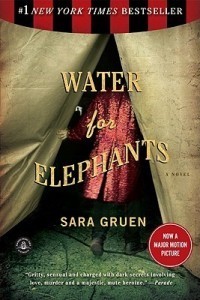 There are stories of truly honorable efforts that started in the NaNoWriMo scramble, notably Sara Gruen’s Water for Elephants. No one in his right mind will gainsay such an achievement. But how frequently does such a happy outcome arrive? And in the meantime, how many potentially important efforts end up rushed, pushed, shoved out the door because they started in the word-count confetti of overheated camaraderie?
There are stories of truly honorable efforts that started in the NaNoWriMo scramble, notably Sara Gruen’s Water for Elephants. No one in his right mind will gainsay such an achievement. But how frequently does such a happy outcome arrive? And in the meantime, how many potentially important efforts end up rushed, pushed, shoved out the door because they started in the word-count confetti of overheated camaraderie?
NaNoWriMo’s “Office of Letters and Light” (I do like that one) counted 341,375 participants at the top of the 2012 luge run. The company material says they “walked away novelists.” I don’t believe there’s any intention there of trivializing the work of true novelists, but I fear that such promotional hyperbole does have that unfortunate effect. Can we really say that the 341,375 who signed up last year—some of whom will have cowered and fled even before the start—”walked away novelists?” Is that kind of overstatement necessary or helpful?
#Cmonson, I hear our friend and Ether sponsor Guy Gonzalez saying.
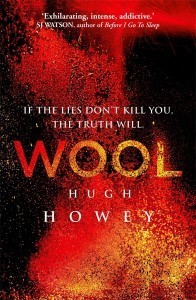 The administration claims that Gruen’s’ book is one of more than 250 “NaNoWriMo novels” that have been traditionally published. They include Howey’s excellent Wool in that count and Erin Morgenstern’s much-praised The Night Circus.
The administration claims that Gruen’s’ book is one of more than 250 “NaNoWriMo novels” that have been traditionally published. They include Howey’s excellent Wool in that count and Erin Morgenstern’s much-praised The Night Circus.
Remember, close to 350,000 efforts were made last year alone. Letters and Light anticipate some 500,000 riding the sleds this year. By my count, they’ve been at it 14 years. Even if the administration is right about 250 books going on to publication contracts, those odds are, as we like to say these days, challenging.
Yet one more time: please engage in NaNoWriMo and enjoy it if that’s your inclination.
All I’m saying is that speed can kill what might have been genuinely textured, fully rendered, contoured, and realized work. So far out on my limb here that I’m grasping at pine straw, I might even hazard a proposal that more than 250 of those projects may have gone further if they weren’t born as speed-above-all slips down the slope.
I’m not at all sure that the NaNoWriMo “OMG I’M SO EXCITED” frisson you see here in some of these tweets doesn’t exacerbate the sensation that we’re all in a race—with each other, with the market, with the readers, with the industry, with ourselves.

Hugh Howey
If you’re feeling competitive, see Howey this week in How To Save Books:
Authors are not in competition with one another. We are in this together, and we are in it with readers and everyone who loves a good tale, however they love it told…What I see around me is a ship taking on water, and the reaction is to eye everyone else to see who is going to eat whom first. The threat is coming from without, not within. We are in this together. My hope is that a ton of readers pick up a great book today, one that I didn’t write, and it makes them want to pick up another.
One of the NaNoWriMo slogans is “The world needs your novel.”
I’m pretty sure the world doesn’t need your novel right this minute. Or even right this month. As Howey says, we want them to pick up another book after yours. That may not happen if you’ve slammed yours together so fast that it’s not as good as it should have been.
NaNoWriMo has never claimed to be an exercise in quality. Would that it were.
Quantity, we’ve got.
I wish you a November focused on quality.
Or would you like to tell me that my vote for going slowly is just the retrograde grits-eating silliness you expect from a Charleston boy? I seriously do not have a problem with you disagreeing, because my own pace passeth all understanding, anyway, and won’t be threatened by contrary views. Let me know what you think of NaNoWriMo and, more importantly, this luge-like drive to produce new work so quickly.
I said this last year but I really think THIS will be my year to finish #NaNoWriMo
— faithlesjuliet (@faithlesjuliet) October 31, 2013
Homigosh homigosh homigosh…3 1/2 hours til NaNoWriMo 2013 starts in Japan! So excited!!! #NaNoWriMo #Countdown #amwriting (eventually)
— Jupiter Star (@jupiter_star) October 31, 2013
I need to keep my Nanowrimo participation a secret from my wife. Otherwise it'll be, "You've got time to write?" & a Bible-thick chore list.
— 9DaysOld (@9DaysOld) October 31, 2013
I AM SO EXCITED ABOUT NANOWRIMO YOU GUYS HAVE NO IDEA IT'S THE ONLY THING KEEPING ME SANE DURING NOVEMBER
— zoe 饿死了 (@skeletalgiraffe) October 31, 2013
"Good O' #NaNoWriMo" a capella song by my friend @Elumir (who sings all the parts): http://t.co/uwaX0r7jAu
— Debbie Ridpath Ohi (@inkyelbows) October 28, 2013
Main image: iStockphoto – Jamx (the ruins of Whitby Abbey, which figured in Bram Stoker’s writing of “Dracula.”
The post Writing on the Ether: The Haunting of NaNoWriMo appeared first on Jane Friedman and was written by Porter Anderson.
October 24, 2013
Writing on the Ether: Toward ‘More Webby’ Books
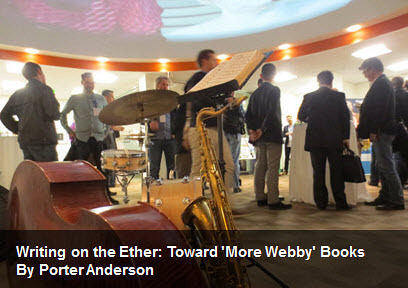
Books in Browsers IV attendees gather Wednesday evening at a reception hosted by San Francisco’s Goethe-Institut.
Table of Contents
Opening Today, 24 October: Books in Browsers IV
Abstracts and Abstractions
And on a Nearby Issue: The Words
 Scratch Magazine: All About the Intersection of Writing and Money
Scratch Magazine: All About the Intersection of Writing and MoneyScratch magazine publishes smart, useful stories about the intersection of writing and money. Scratch is for writers of all genres and trades—and for anyone who wants to know where the publishing and journalism industries go from here. Our free preview issue includes an in-depth report on book marketing by Jane Friedman, as well as an editor roundtable on how websites determine pay for freelance contributions.
Click here to browse the entire preview issue.
Opening Today, 24 October: Books in Browsers IV
A small summit for the new generation of Internet publishing companies, focusing on developers and designers who are building and launching tools for online storytelling, expression, and art.

Kate Pullinger
SAN FRANCISCO, California — ”More webby” is the way London-based “digital author” and Bath Spa University professor Kate Pullinger describes what will become of books in the future.
Pullinger is a speaker in the two-day Books in Browsers Conference opening here today—and the librettist for the Slovak National Theater’s new opera by composer Ľubica Čekovská, Dorian Gray, premiering November 8 in Bratislava.

Brian O’Leary
Her “more webby” phrase is a colloquial echo of the seminal “Context, Not Container” essay published by Brian O’Leary in Book: A Futurist’s Manifesto. His opening lines:
The way we think about book, magazine, and newspaper publishing is unduly governed by the physical containers we have used for centuries to transmit information. Those containers define content in two dimensions, necessarily ignoring context, defined here as tagged content, research, footnoted links, sources, and audio and video background, as well as title-level metadata.
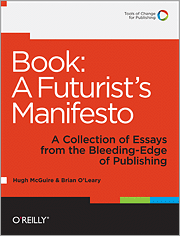 In other words, as long as we envision “the book” as that thing with pages—or its digital descendant on an e-reader or tablet—we’re not giving the original artistry and impulse behind a new body of work a chance to live as the unique content it is in the context of its creation.
In other words, as long as we envision “the book” as that thing with pages—or its digital descendant on an e-reader or tablet—we’re not giving the original artistry and impulse behind a new body of work a chance to live as the unique content it is in the context of its creation.
One model of this is referred to as a “networked book,” a work that might be described by its connections to other work.
And that gives you some idea why Books in Browsers is among the more forward-looking, distinctive conferences of the publishing year.
We’re hashtagging live coverage from it at #bib13. There is a live stream of the presentations available during conference hours here.
Although the organizers’ descriptor I quote at the top of the column talks of “publishing companies”—and although many specialized startups are represented in its program—this isn’t a standard industry conference kickline of new ventures trying to attract contracts and funding. You don’t come out humming the companies. Instead, you leave curious about their ideas.
Heading to #bib13. I am one of 2 people in the entire airport who is reading a print book.
— Derek Kurth (@derekkurth) October 23, 2013
At Books in Browsers, the ethos is what counts. More webby. An idea of literature vivified and invigorated by its authors’ express intents, not trapped in automatic applications of traditional forms, functions, containers.
The conference’s name can trip up newcomers who might take it too literally. “Books in Browsers” is the launchpad for formats that eventually may be tied to no one device, design, or delimiting factor we worry about today.
This is a promise, after all, of all this tedious digital disruption: to make it up to us eventually with something…wonderful.

Kat Meyer
The confab, now in its fourth year, is put together by Peter Brantley and Kat Meyer. It’s produced by their respective pedestals, Hypothes.is and the Frankfurt Book Fair.
Major support comes from Brewster Kahle’s Internet Archive, our host and venue for the affair, and from swissnex San Francisco, which is staging a hackday on Saturday.

Peter Brantley
On both conference days, Thursday and Friday, we start with a welcome at 8:50a PT, 11:50aET, 1550 GMT.
Other than those typical conference-daily start times, the only thing that might readily link this conference to many other publishing confabs is the fact that it’s in October.
When the industry! the industry! isn’t working up a lather about Amazon‘s latest innovation, it’s busy scheduling conferences in October. An odd fixation on this month creates schedule conflicts, strained travel budgets, “conference fatigue.” Sometimes we even see dueling conferences scheduled against each other on the same day in the same venue, splitting the audience and guaranteeing that everyone misses something.
But even those of us living out of suitcases in October are glad to see Books in Browsers arrive—a chance to remember that the way to reconnect with the oldest instincts of storytelling is not to retreat, but to look for the newest potentials in our trade.
That’s what Books in Browsers is about, and I’ll briefly highlight a few of the sessions scheduled for the conference to give you an idea of why it makes sense to look in on it, on Twitter or on video, if you have a chance.

Baldur Bjarnason
I’ll start with our friend Baldur Bjarnason, who has told me that he hates the program’s abstract for his paper, although “I have only myself to blame since I wrote it in the first place.” Typical Bjarnason.
In fact, the short abstract sets off the questions at hand. His presentation is titled “Interactivity is What You Do.” And it asks, in part:
What if you want to do something more digital? Something interactive? What if you don’t want to do a linear piece all glossed up in fancy magazine-inspired decoration and layout? What if you want to go web-native? Find out what is possible; what narrative and design tactics the web lends itself to; what interactive forms, structures, and tactics aid the exploration of complex stories?
This is about, after all, getting “Beyond the Book,” as the issue was posed in Frankfurt by Arizona State’s Center for Science and the Imagination.

Philip Jones
As The Bookseller Editor Philip Jones puts it in his post Plan 9 from the interweb about AudioGo feeling pressed and crowdfunding publisher Unbound pulling in more funding:
There are some days in publishing where there is an unmistakable whiff of a paradigm shift. Today is one such day.
Kill me now “@thebookseller: Morrissey goes straight to number one in the Official UK Top 50 https://t.co/Q10iZnR7bl”
— Oliver Munson (@oliagent) October 22, 2013
Abstracts and Abstractions
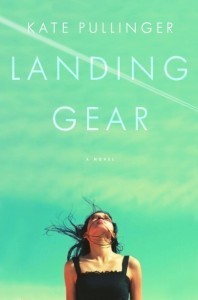 Pullinger’s own presentation—”Landing Gear: A Writer, A Novel, A Publisher, An API”—is interesting for its examination of a bridge between old and new publishing. From her abstract:
Pullinger’s own presentation—”Landing Gear: A Writer, A Novel, A Publisher, An API”—is interesting for its examination of a bridge between old and new publishing. From her abstract:
Writing novels and co-creating multimedia digital narratives…have resided in parallel universes, with little crossover between the aging galaxy of traditional publishing and the newly created planet of digital fiction. Until now! Pullinger’s new novel, Landing Gear…will be offered up at BiB’s first ever Hackday as an API, in partnership with Pullinger’s Canadian publisher, Doubleday. In her talk, Pullinger will discuss how this literary novel will become a Writeable API.

Peter Haasz
Peter Haasz of ebook and audiobook distributor OverDrive, on the other hand, arrives with a presentation named for a story we know all too well: “The Blind Men and the Elephant.” Its abstract poses a small cascade of questions that could dovetail with Pullinger’s Landing Gear examination:
What if, instead of files, publishers delivered ebooks as fully formed reading experiences via self-contained web services? By taking back responsibility for the whole book — which in the print world always included the reading system — could publishers deliver a more compelling experience, more faithfully and efficiently, across different channels? Would we see publishers developing better ways of reading special types of content, such as cookbooks, textbooks and travel guides?

Allen Tan
New York Times interactive designer Allen Tan’s talk is titled “Beyond Intuitive UI: Design Considerations for Attention, Rhythm, and Weight.” From the abstract:
The past year has seen widespread experimentation in storytelling that brings together different types of media with text and interaction. Hopefully, these forms will continue to diverge as they respond to the particulars of the content housed within them. What will remain the same, though, are the considerations in designing the reader’s experience. What do “intuitive” and “immersive” really mean, and how do designers manage attention, rhythm, and weight when designing interactive reading systems?

John Maxwell
And John W. Maxwell, an assistant professor in the Master of Publishing Program at Simon Fraser University, joins Haig Armen of LiFT Studios on “The Craft of the Book in the Age of the Web.” From their abstract:
There seems to be a fair bit of consensus in this community that books need browsers; the bigger question is whether browsers need books? The web is boundless; James Bridle and others have made a compelling argument that tells us that literature has moved beyond the work, and now resides in the Network. But as teachers—John in publishing and Haig in design—we worry sometimes that publishing and the tradition of the book are parting ways.

Haig Armen
There is a vast and valuable craft tradition in and around the book. Publishing is and has always been a craft–in a special category distinct from both art and industry…Have we lost sight of the craft tradition of the age of the web? If so, what happens to that wealth of knowledge and wisdom? Or is that tradition migrating to new contexts—in which case, what is lost and what is gained in translation?
@pieratt I think you could get down with this #bib13
— George Baier IV (@gbiv) October 24, 2013
And on a Nearby Issue: The Words
With roughly 25 presentations planned for the two days of Books in Browsing, the “hallways” between sessions, during breaks and meals and over drinks, should be stimulating.

James Bridle
In fact, a late add will be of special interest to many: UK-based James Bridle of BookTwo now is scheduled to present “Network Tense: How to Approach a Contemporary, Technologically-Mediated World” in today’s morning session.
And from another round of “new thinking”—the subject of Tuesday’s Ether for Authors: Where Is Publishing’s Jetpack? at Publishing Perspectives—there’s an interesting cautionary note not necessarily expected to factor explicitly in this year’s Books in Browsers presentations.
In that column, we heard from the New York Times’ David Streitfeld in his revealing article This Is War (for a Game Industry’s Soul), featuring the work of Stockholm’s Digital Illusions Creative Entertainment, or DICE (owned by EA). At issue there, in part, was the state of storytelling in the comparatively lucrative world of video- and online gaming.
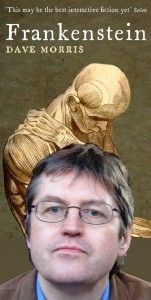
Dave Morris
The London-based author and designer of videogames Dave Morris left an articulate comment on the piece in response to what he perceived as an attempt to sidestep a kind of storytelling responsibility.
His work includes the conception and writing of the interactive reimagining of Mary Shelley’s Frankenstein for Profile Books and inkle studios. His comment speaks to the primacy of story, and even of text, in the development of authentic work of merit—something many Books in Browsers attendees might agree with.
Morris begins with Patrick Soderlund, a Swedish game executive, asserting to Streitfeld that narrative elements tend to fade in videogame content from Stockholm’s DICE because “storytelling does not come naturally to the Swedes.”
Morris:
“Storytelling does not come naturally to the Swedes”? This is, of course, utter nonsense. You will find game developers in the UK saying that storytelling does not come naturally to the British. America likewise. The fact is, storytelling often doesn’t come naturally to the kind of person who gets interested in videogame development – but that, fortunately, is changing.
…Our stories are not polished the way a novel or movie ought to be, but they’re not intended to be a spectator sport. Experienced from within, a genuinely emergent story is new and unique and thrilling.
…I have to add that words are still the most powerful medium for telling stories. That’s been true since long before Homer first banged his stick on the ground and said, “Sing, goddess!” – and you bet you could hear a pin drop. Words are more powerful because they create a more personal conduit into the imagination of each reader or each listener. (And to think I say this as a writer of comic books and a designer of videogames.) That’s why, if a discerning fellow in the year 3000 really wants to appreciate Gulliver’s Travels, he’ll do without the sloshing surf sound FX and all that art installation gimcrackery and just go back to the words as Swift wrote them.
Leaving a pretty good ball game to head to the #bib13 reception! #gosox
— Ania Wieckowski (@agwieckowski) October 24, 2013
 Scratch Magazine: All About the Intersection of Writing and Money
Scratch Magazine: All About the Intersection of Writing and MoneyScratch magazine publishes smart, useful stories about the intersection of writing and money. Scratch is for writers of all genres and trades—and for anyone who wants to know where the publishing and journalism industries go from here. Our free preview issue includes an in-depth report on book marketing by Jane Friedman, as well as an editor roundtable on how websites determine pay for freelance contributions.
Click here to browse the entire preview issue.
Main image: Porter Anderson
The post Writing on the Ether: Toward ‘More Webby’ Books appeared first on Jane Friedman and was written by Porter Anderson.
October 22, 2013
My Newest Project: Scratch Magazine Launches Today
Today I am proud to announce the launch of Scratch magazine, all about the intersection of writing and money.
The Scratch Mission
Very few people or publications speak openly about the economic realities of the publishing business. In our bare-it-all media culture, frank talk about money remains taboo. Writers often lack the context or insight to understand our own industry, even as that industry undergoes massive structural and economic changes. Scratch provides a home for open and sustained discussion of these experiences through high-quality content. Yes, we publish advice for writers—but we also go further, investigating the nuances of writers’ relationships to money, work, and publishing.
Our Free Preview Issue
Today we’re launching a free preview issue that gives you an idea of what we’re all about. Our first official issue will release on January 15, 2014.
For the preview issue, I contributed the following pieces:
Contracts 101: The Grant of Rights clause — advice for writers on negotiating this important clause in a book or magazine contract. If you’re allergic to legalese, here’s the tip sheet, available in a handy PDF download.
The Age of the Algorithm — how book marketing is changing. I also wrote a companion piece on book marketing basics. Both are very useful if you’re planning a book launch.
Along with Manjula Martin, my co-founder, I moderated a roundtable of web editors, to discuss how they make assignments and how they pay writers.
Don’t miss the Letter from the Editors (which further elaborates on our mission), and our Transparency Index, where we disclose the back story of how we launched the magazine.
And there is much more worth reading—including an interview with Jonathan Franzen by Manjula.
Will you subscribe or donate?
If you find Scratch’s content useful, then I hope you’ll subscribe before the first issue releases in January—you’ll get a special rate if you do. Or, if a subscription isn’t for you, but you’d still like to support our mission, then consider a donation.
Also, you can:
Find us on Facebook
Find us on Twitter (@scratch_mag)
Find us on Google Plus
Sign up for our free e-mail newsletter
The post My Newest Project: Scratch Magazine Launches Today appeared first on Jane Friedman and was written by Jane Friedman.
Jane Friedman
- Jane Friedman's profile
- 1882 followers


